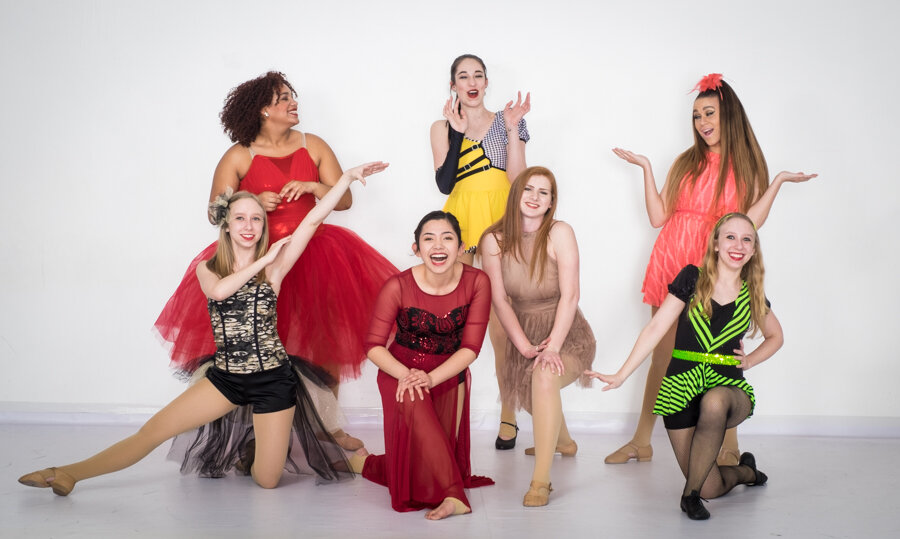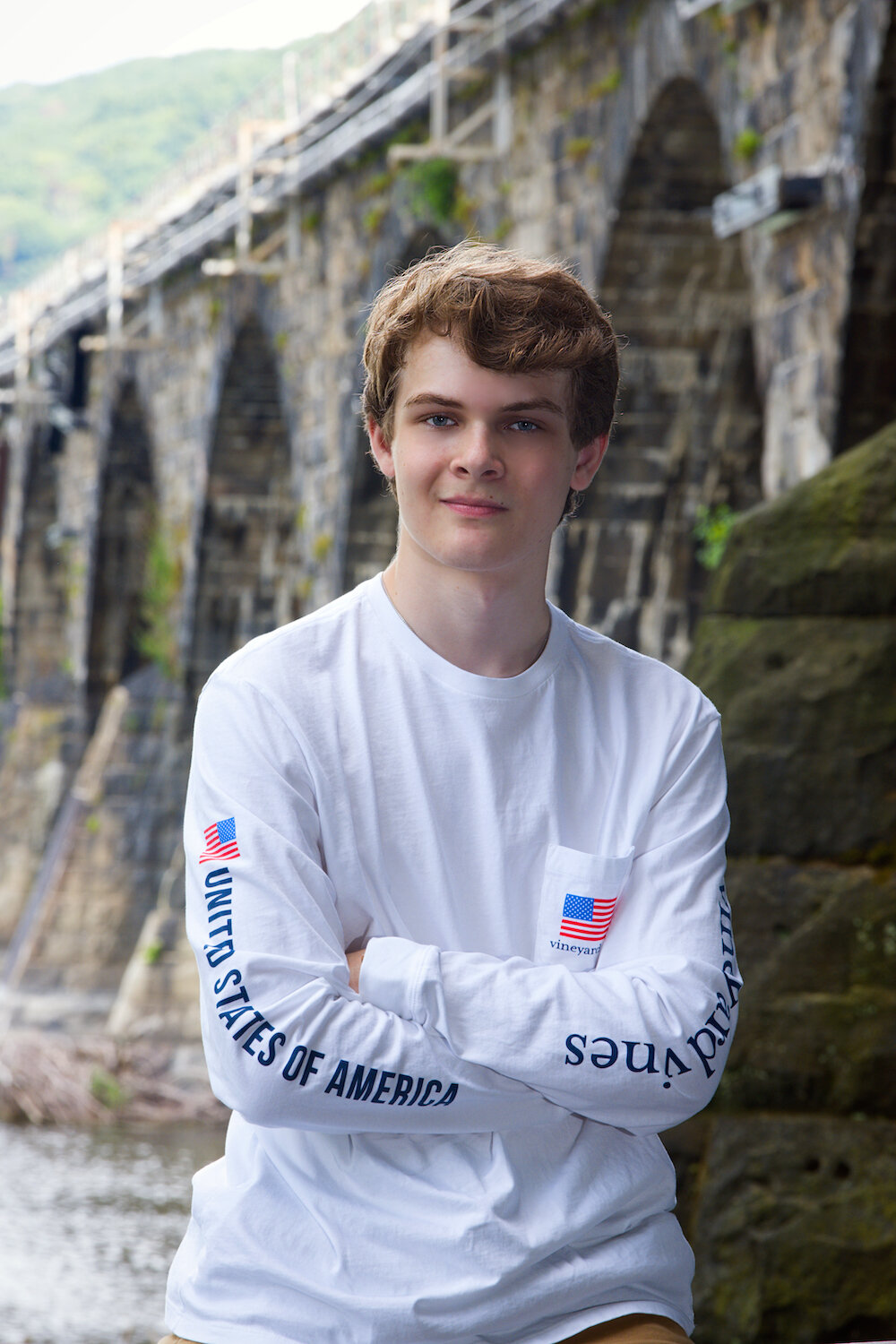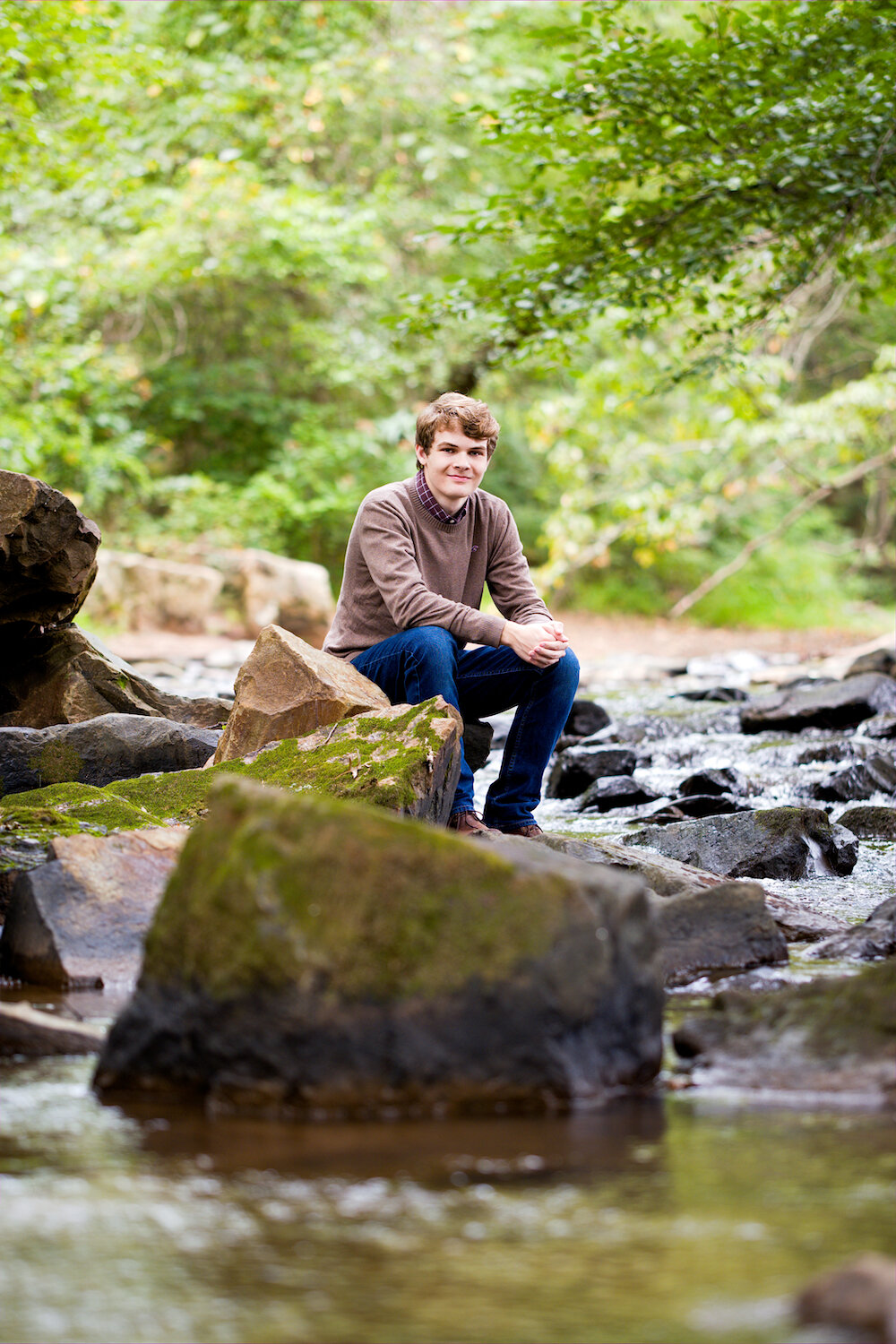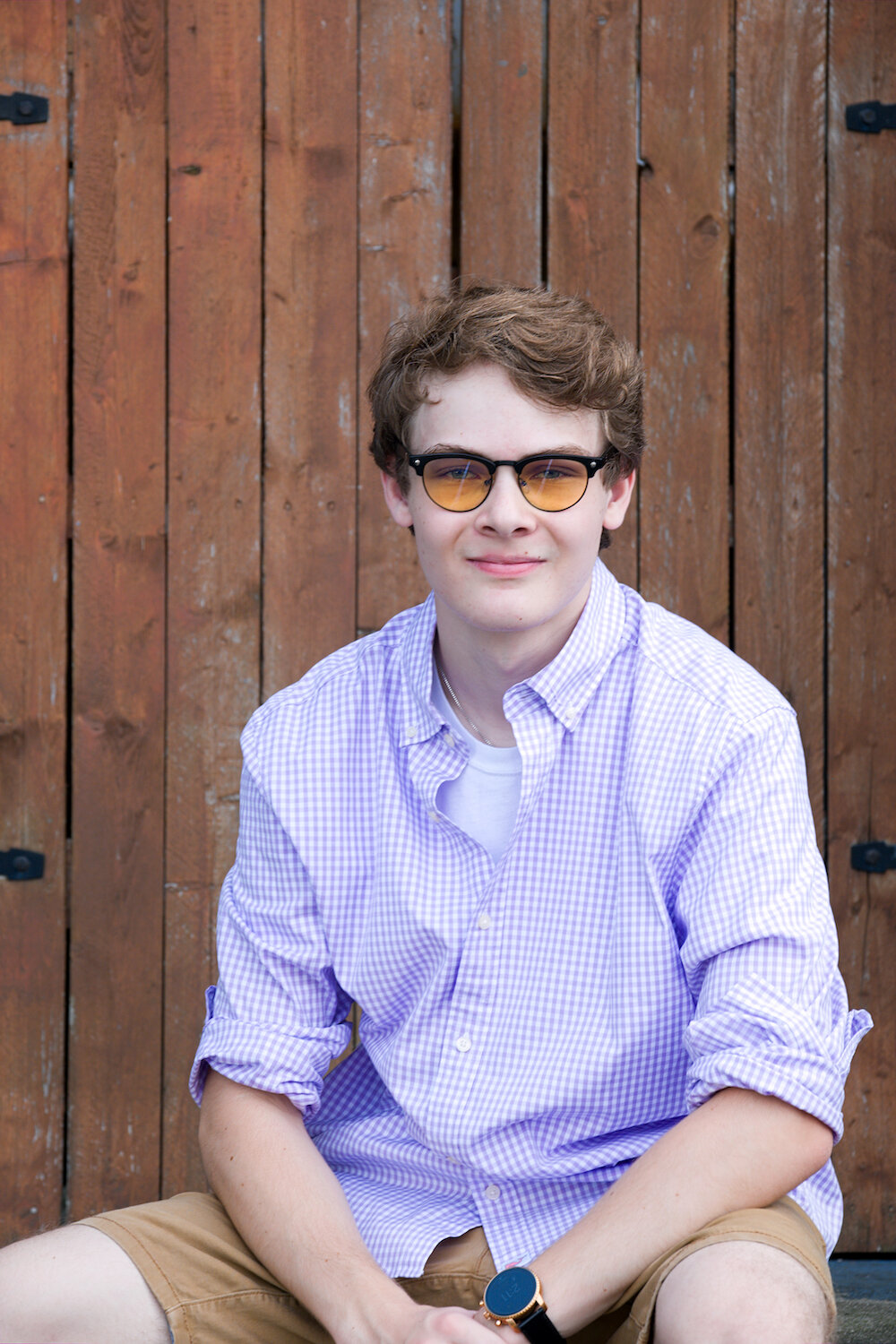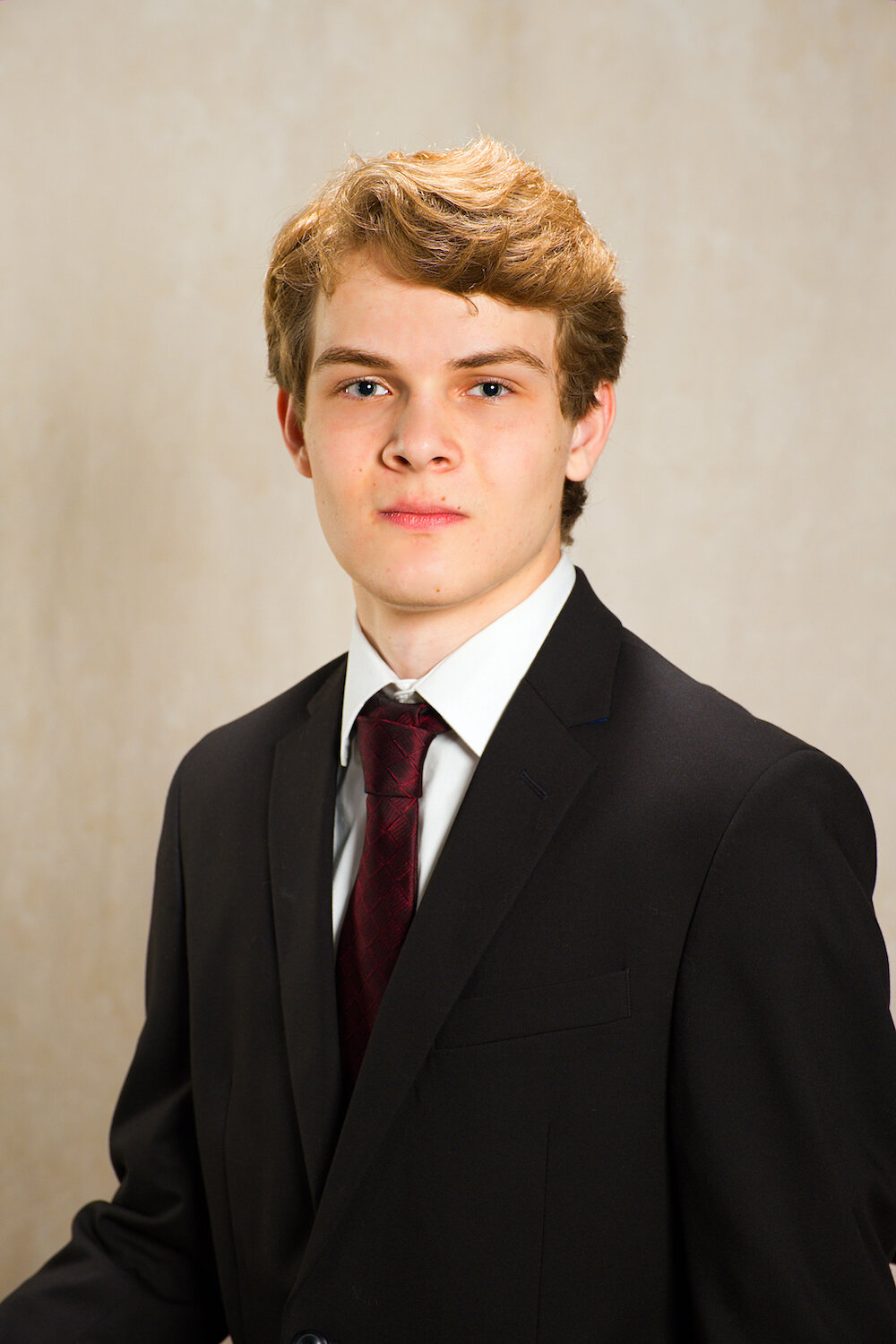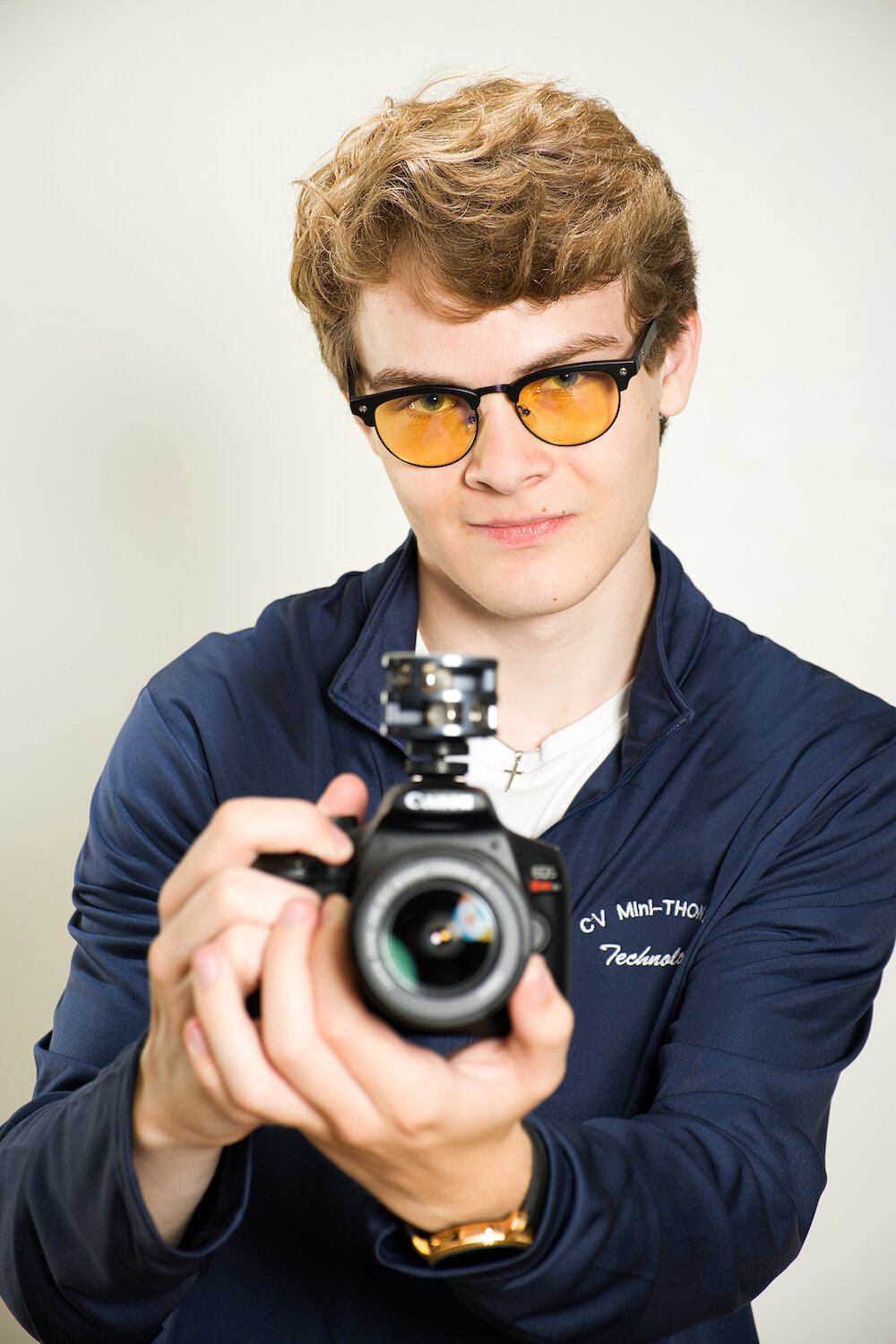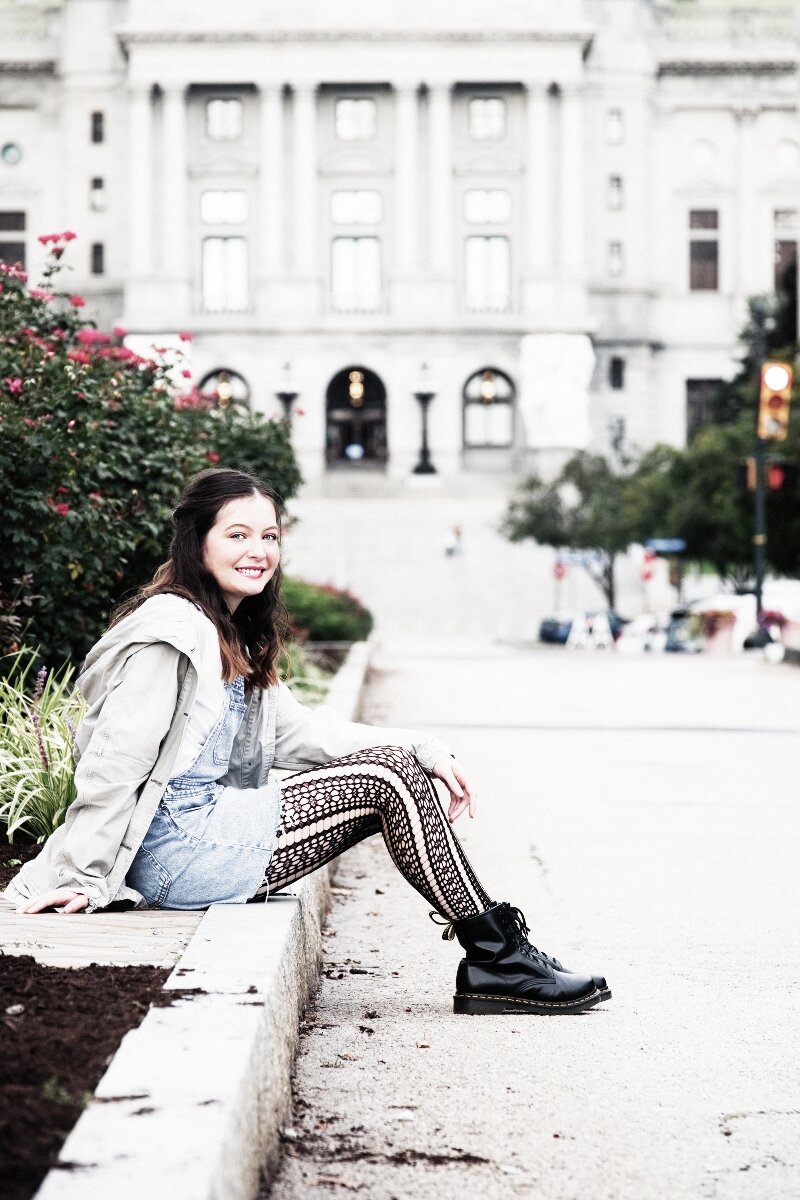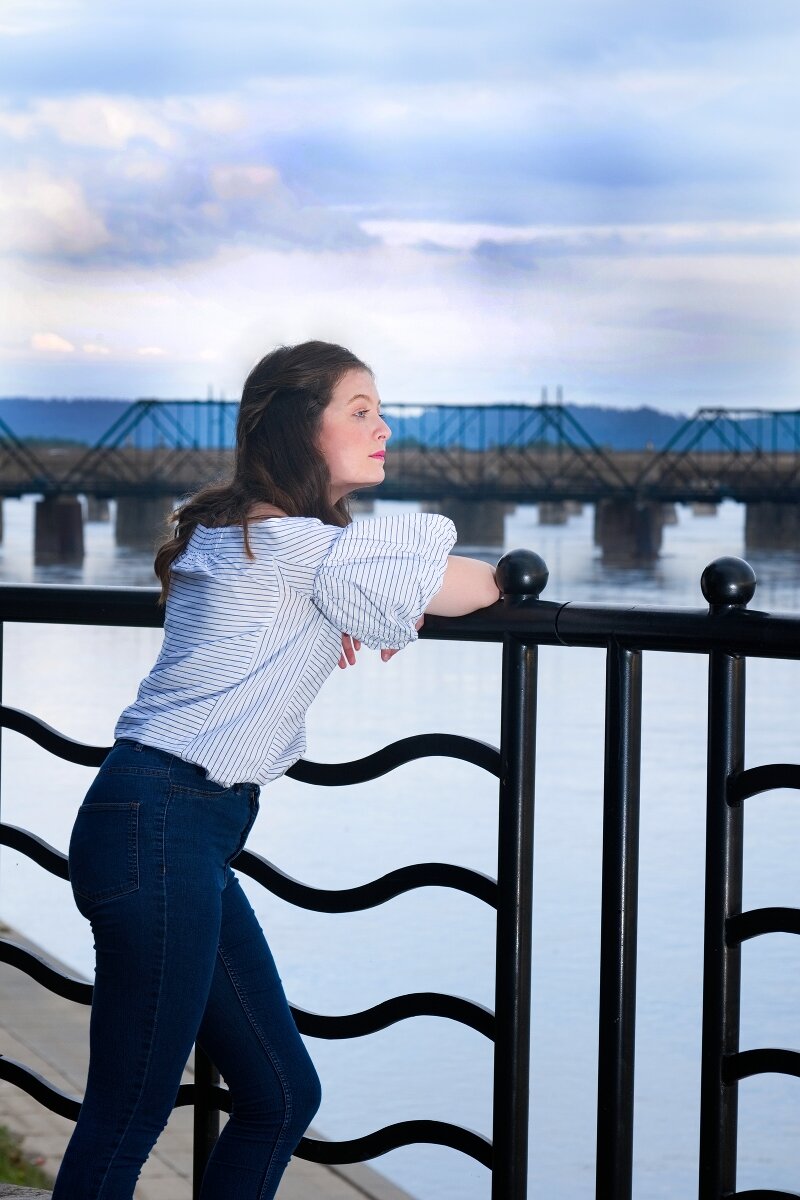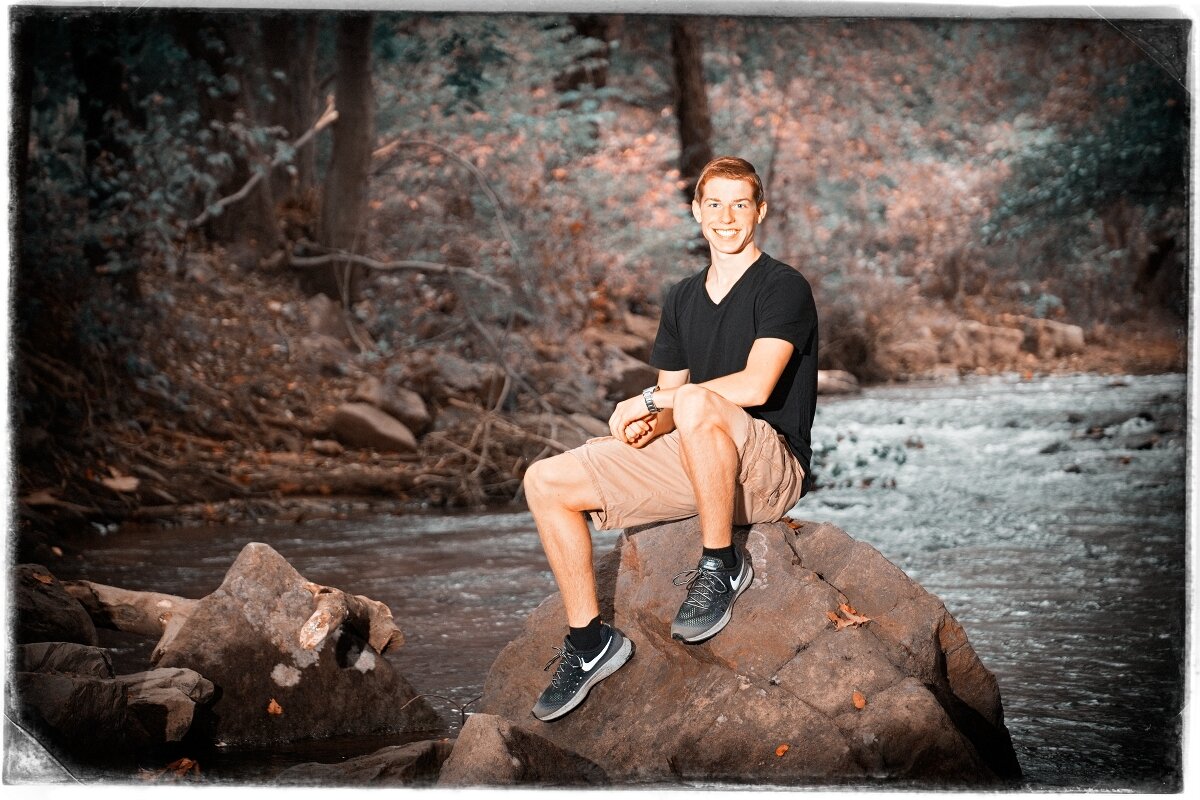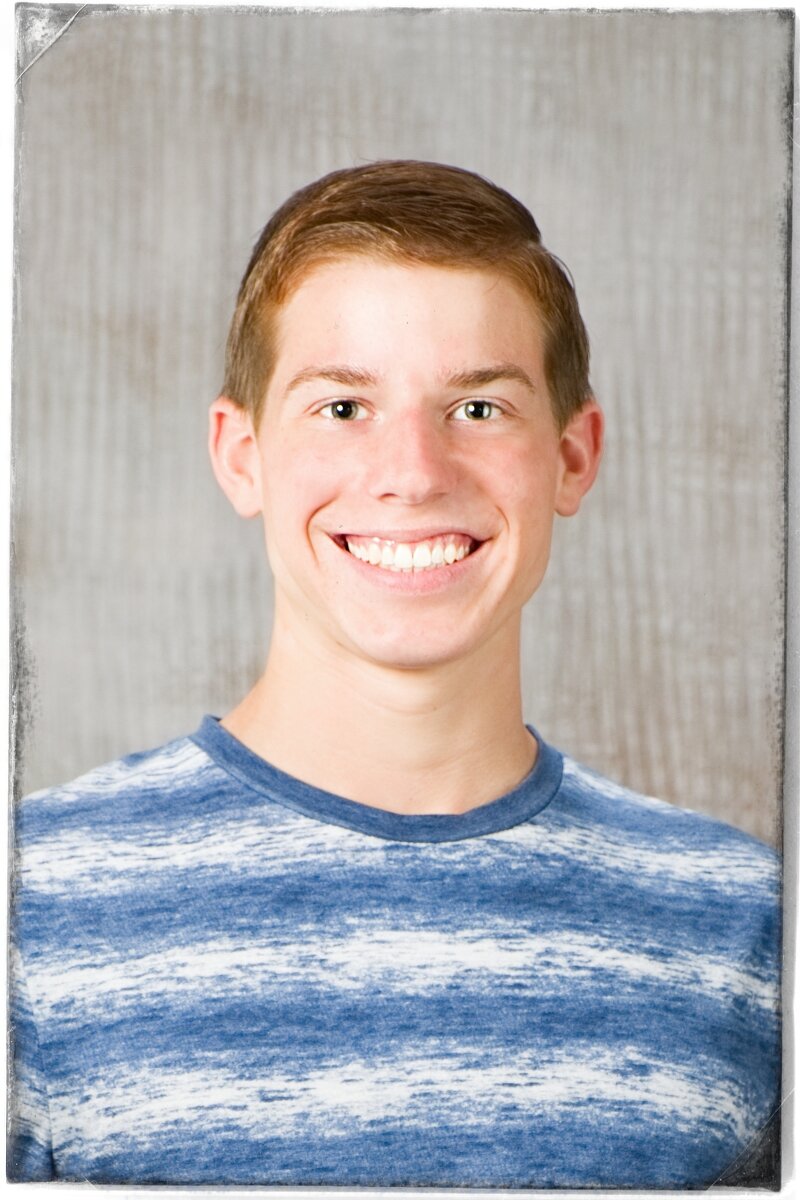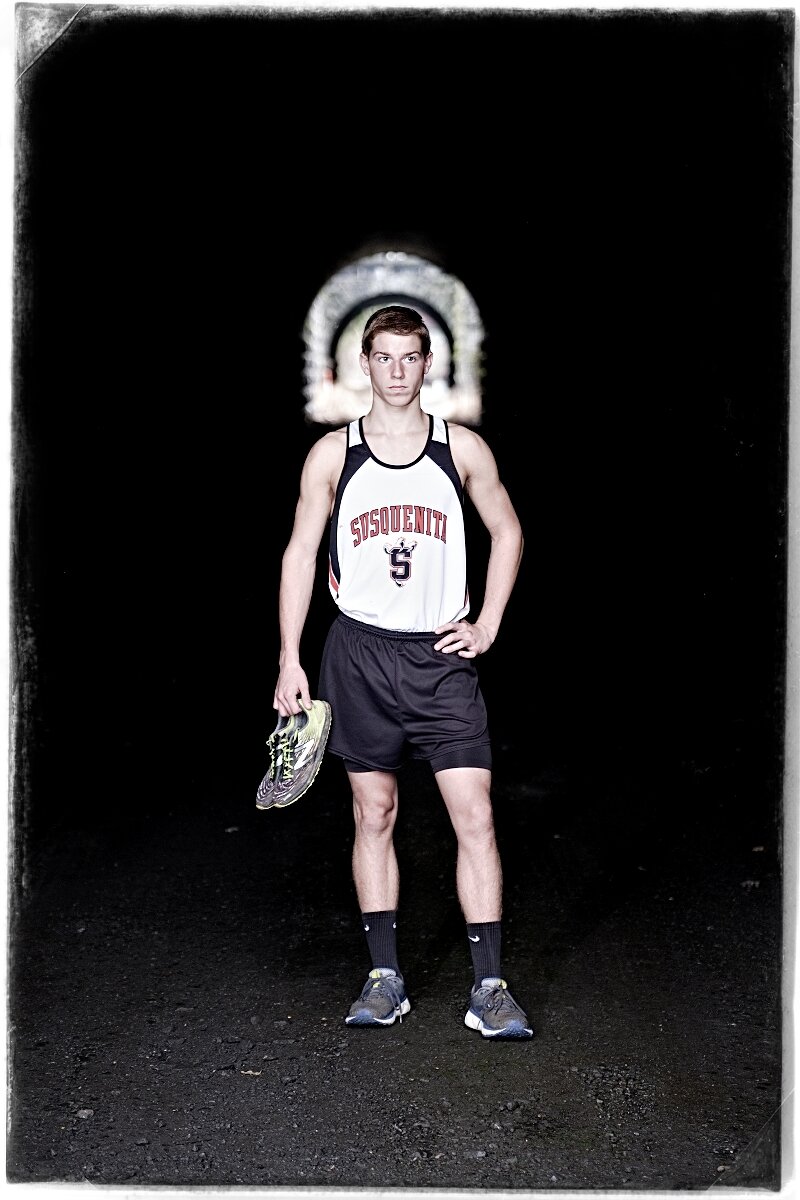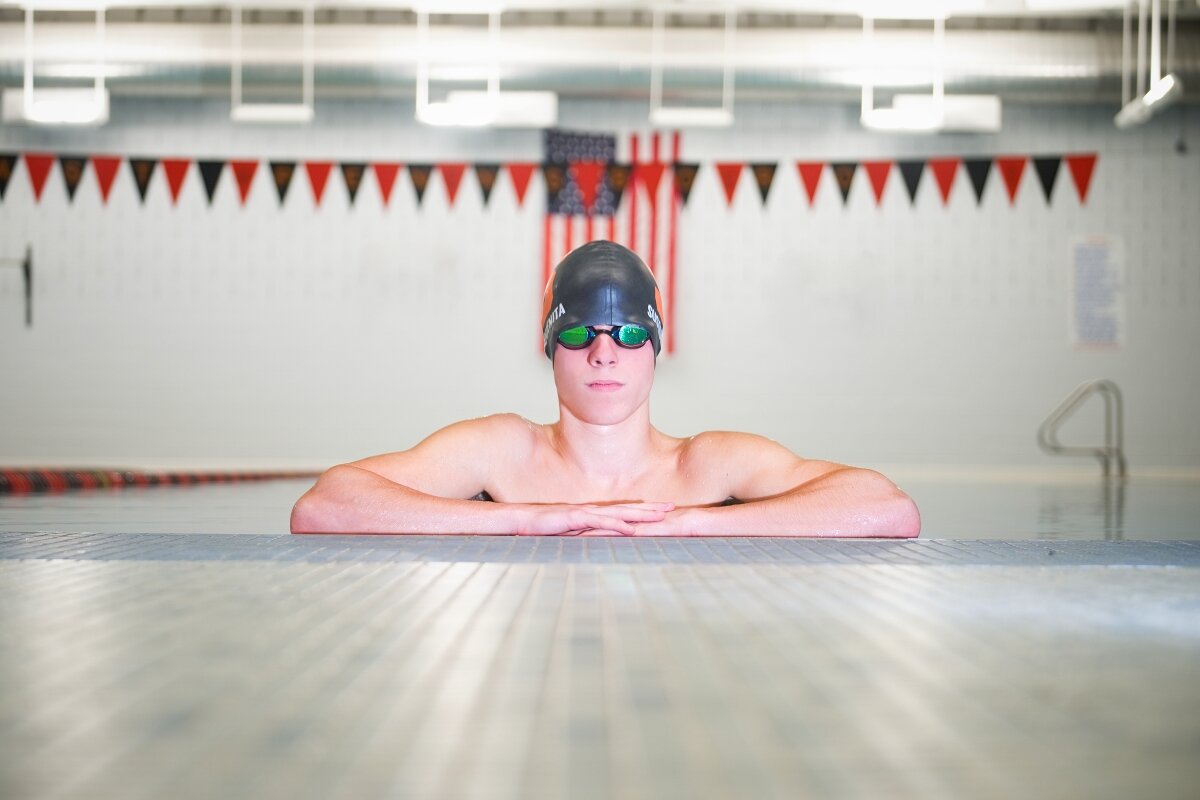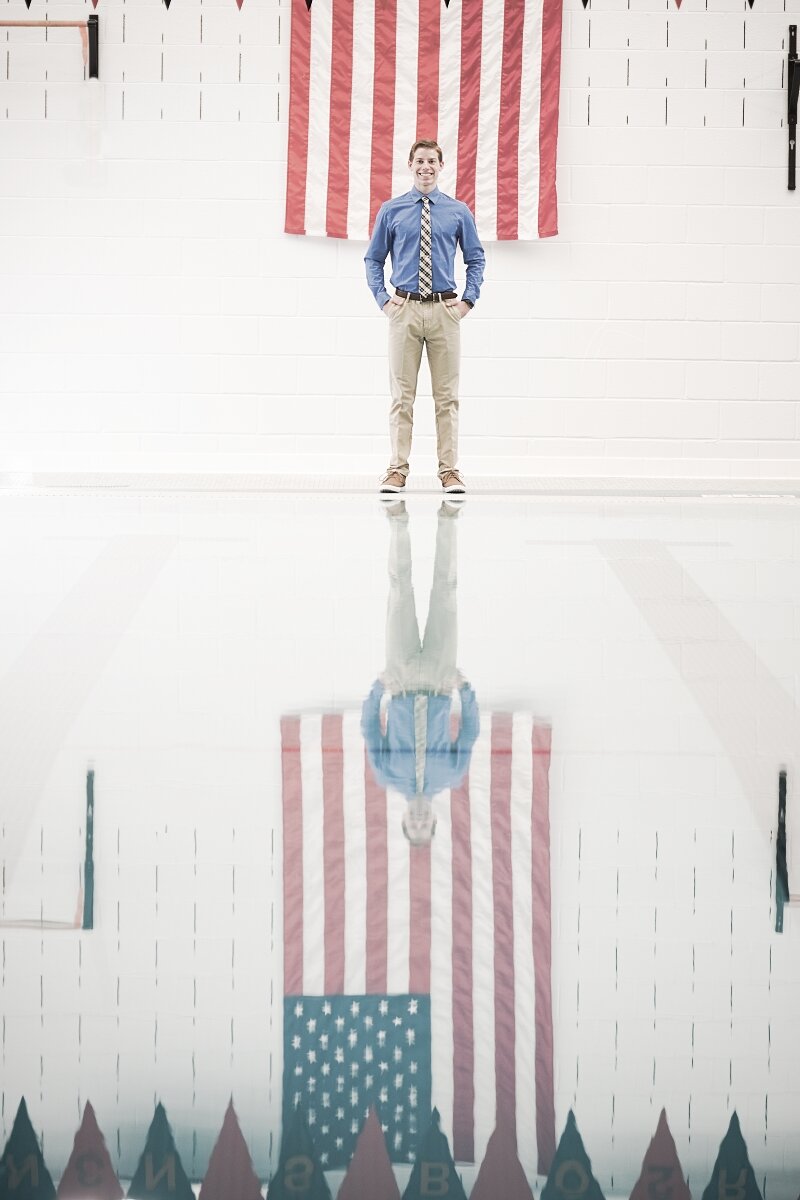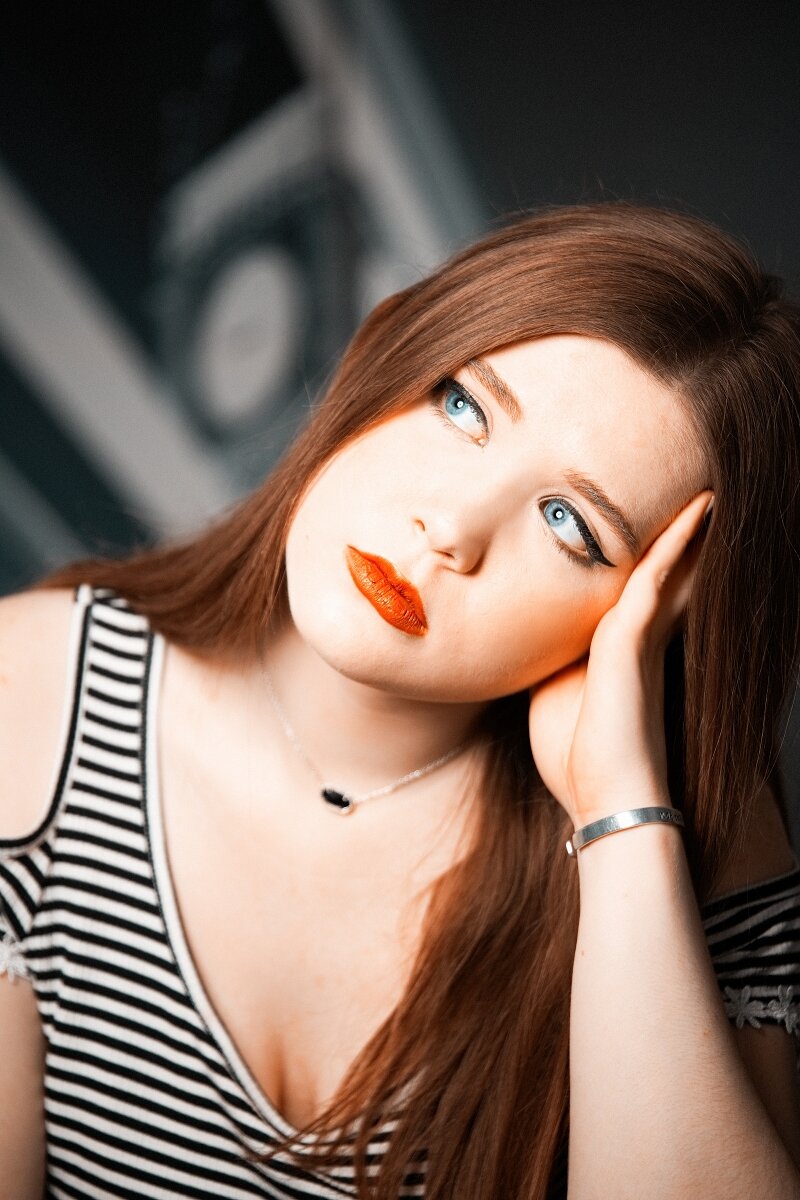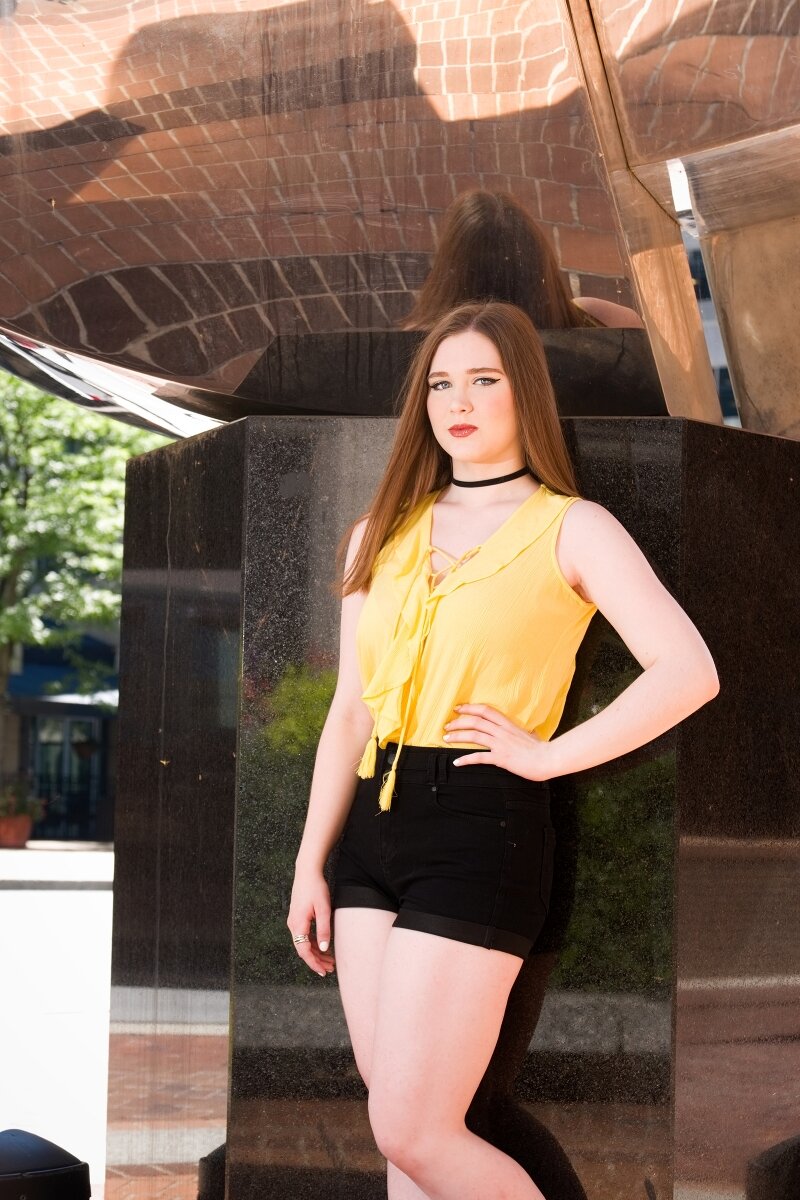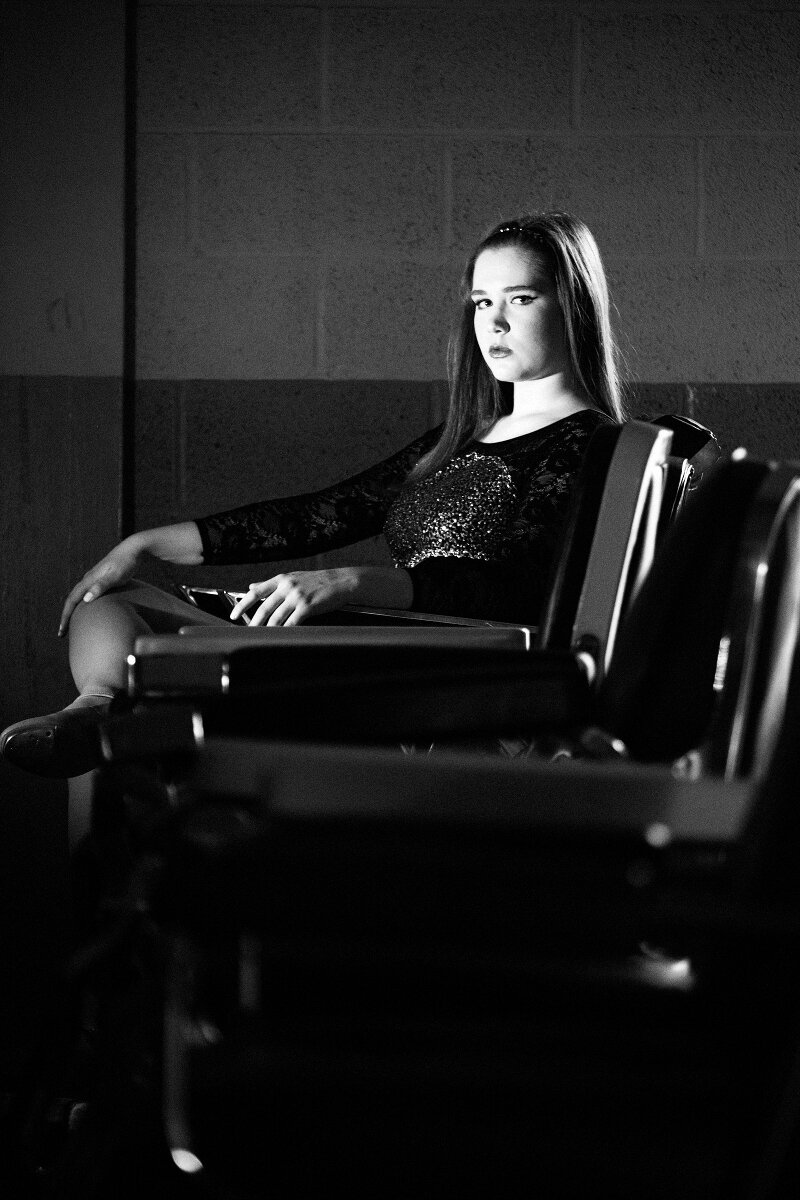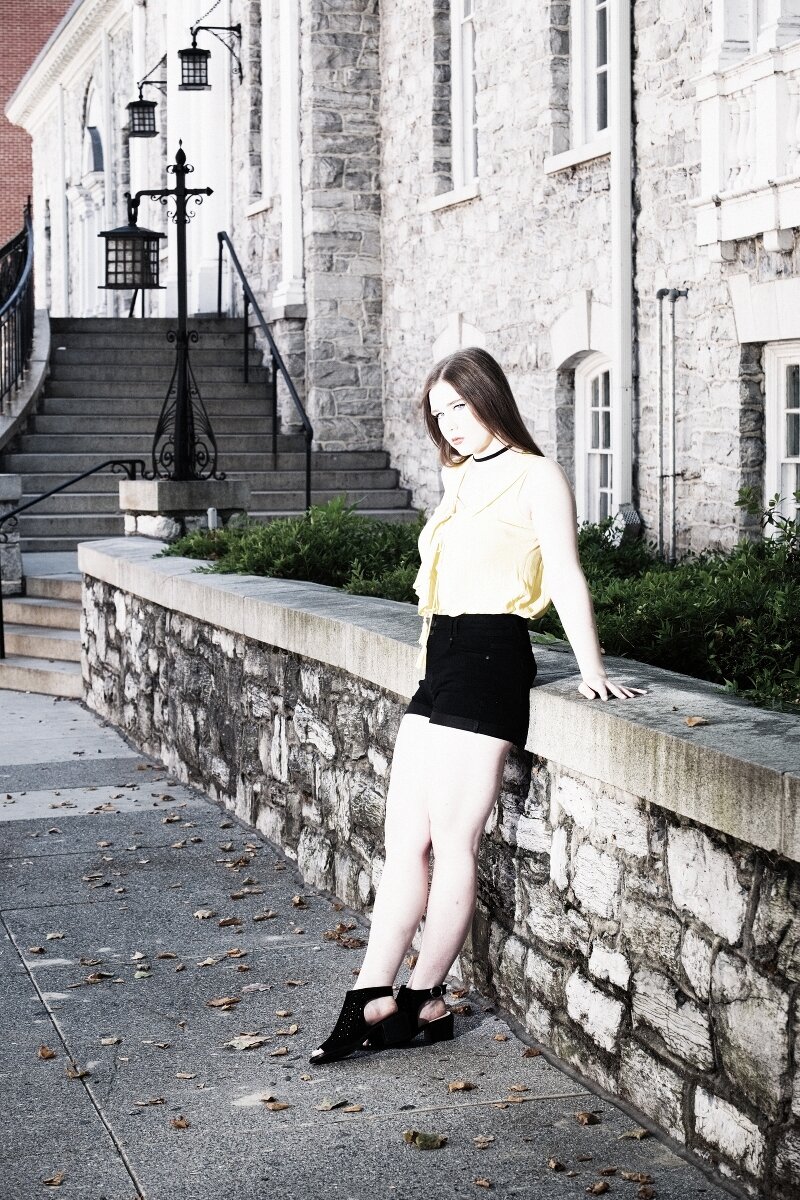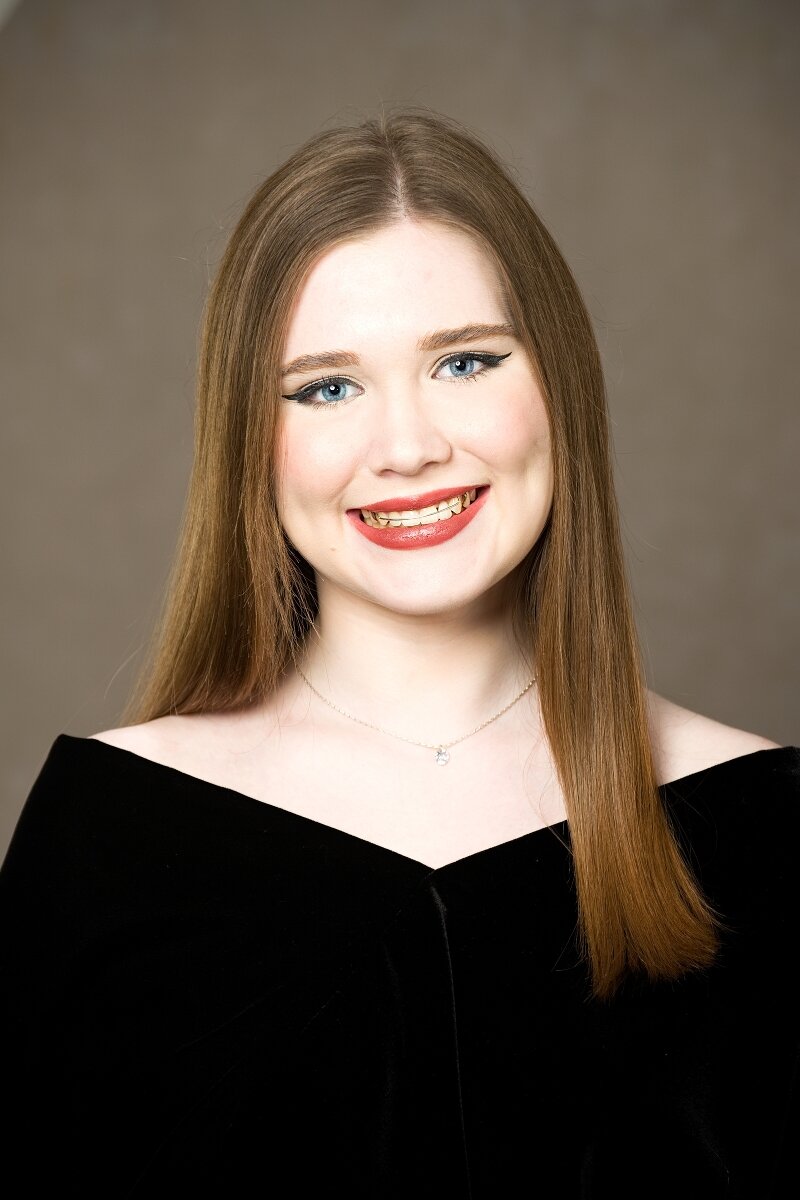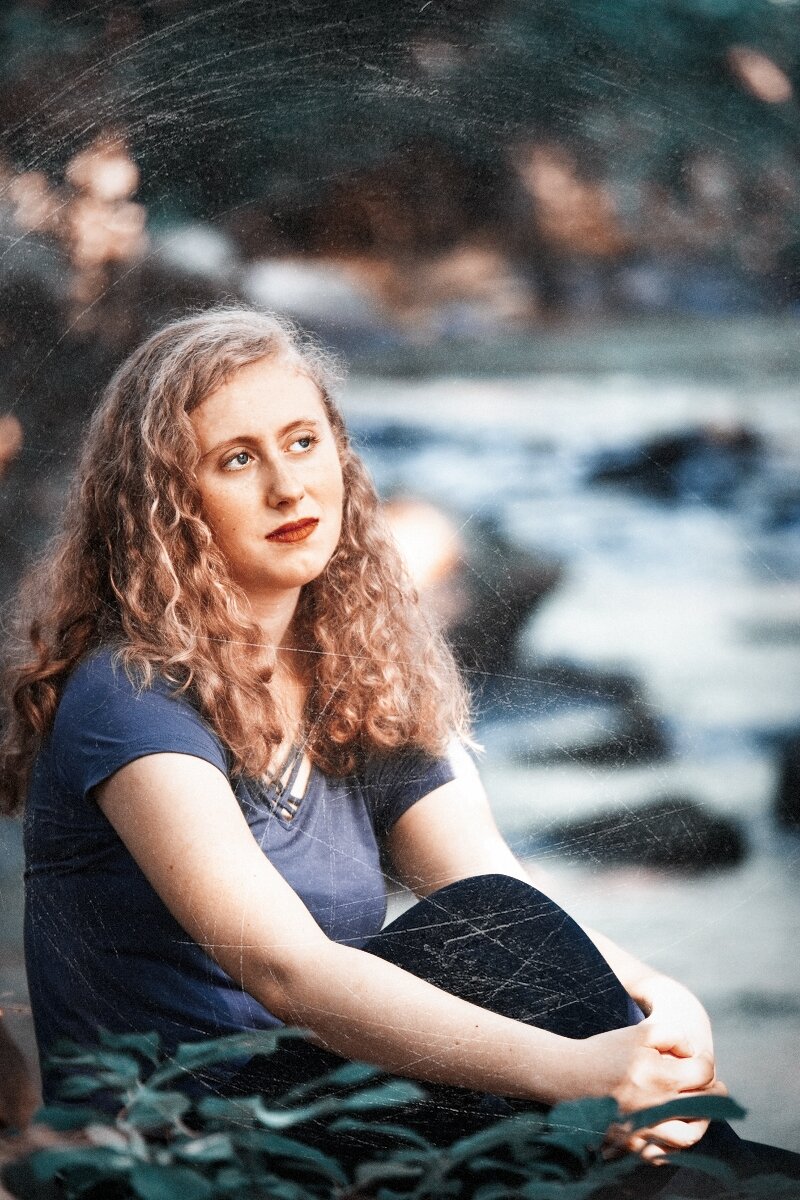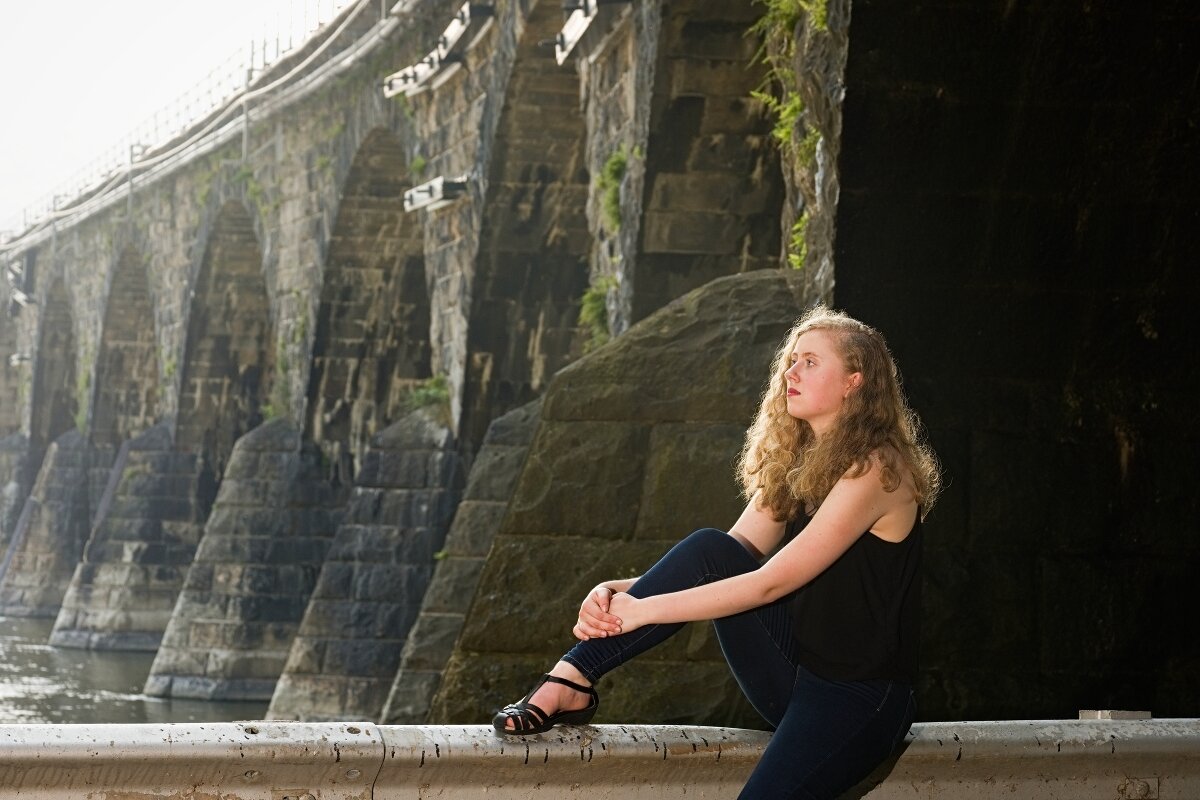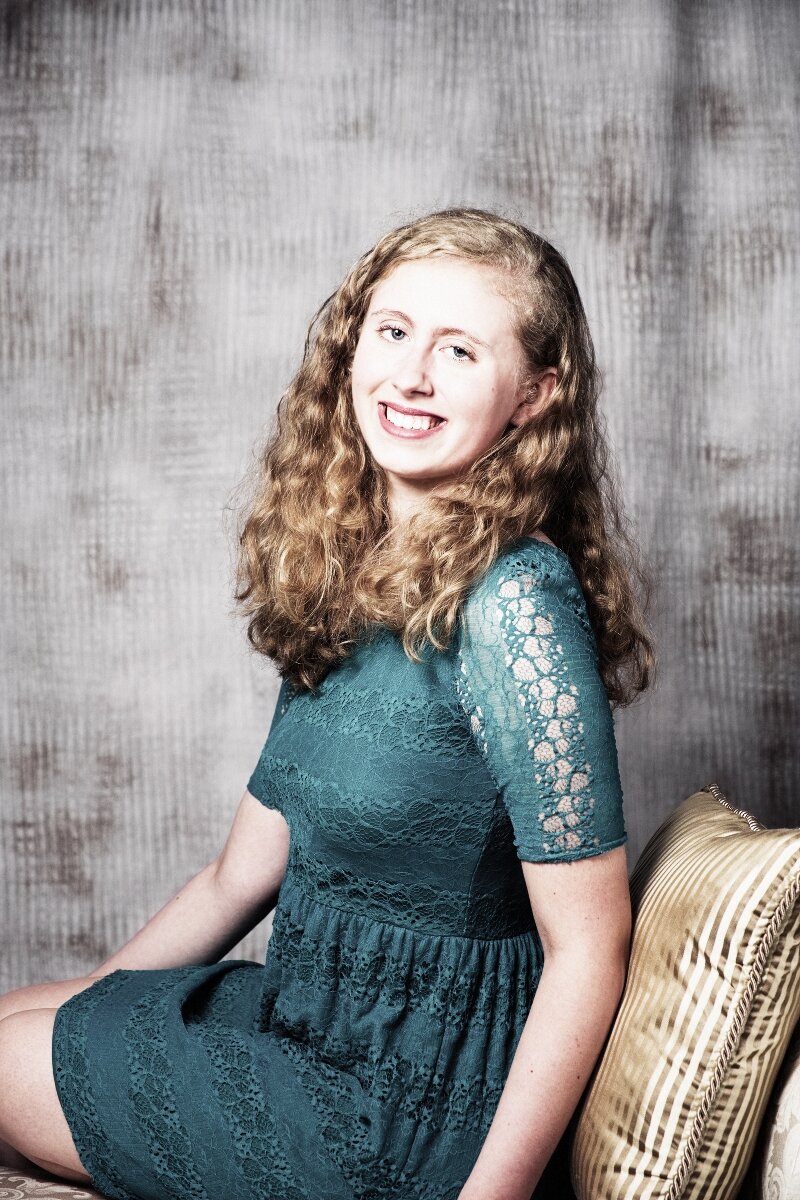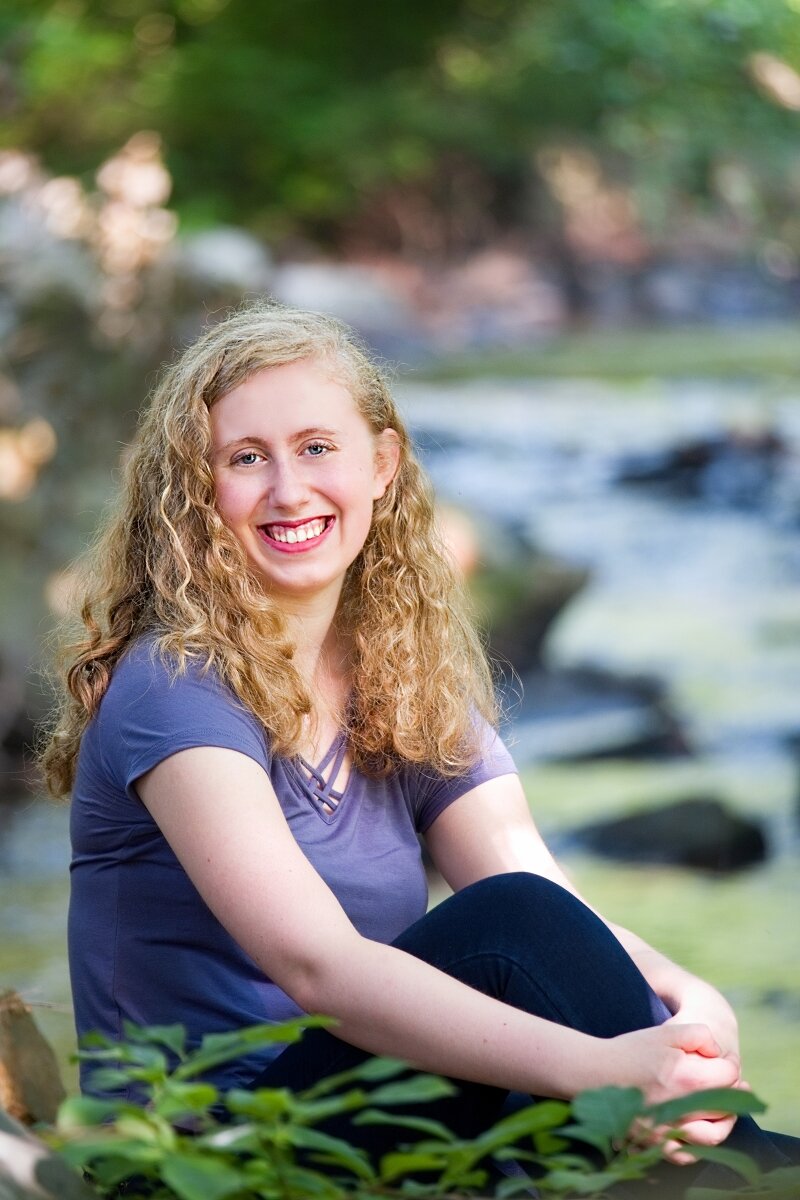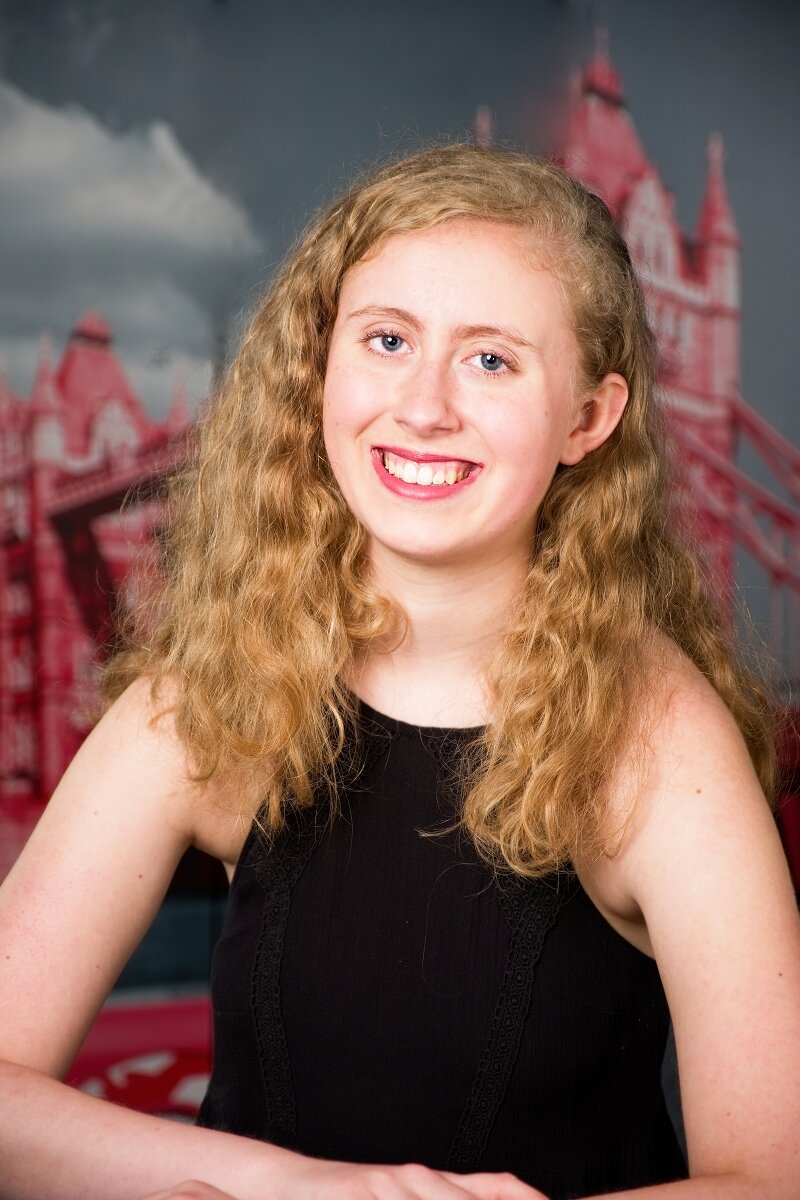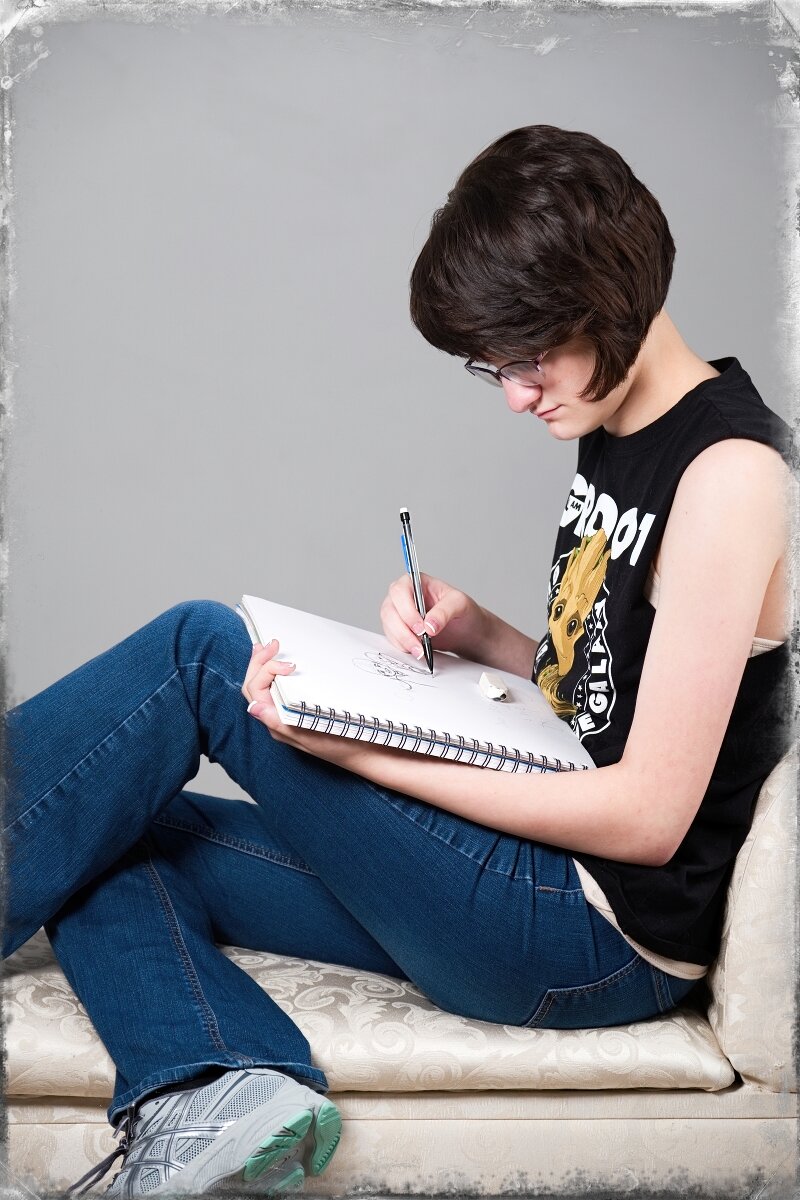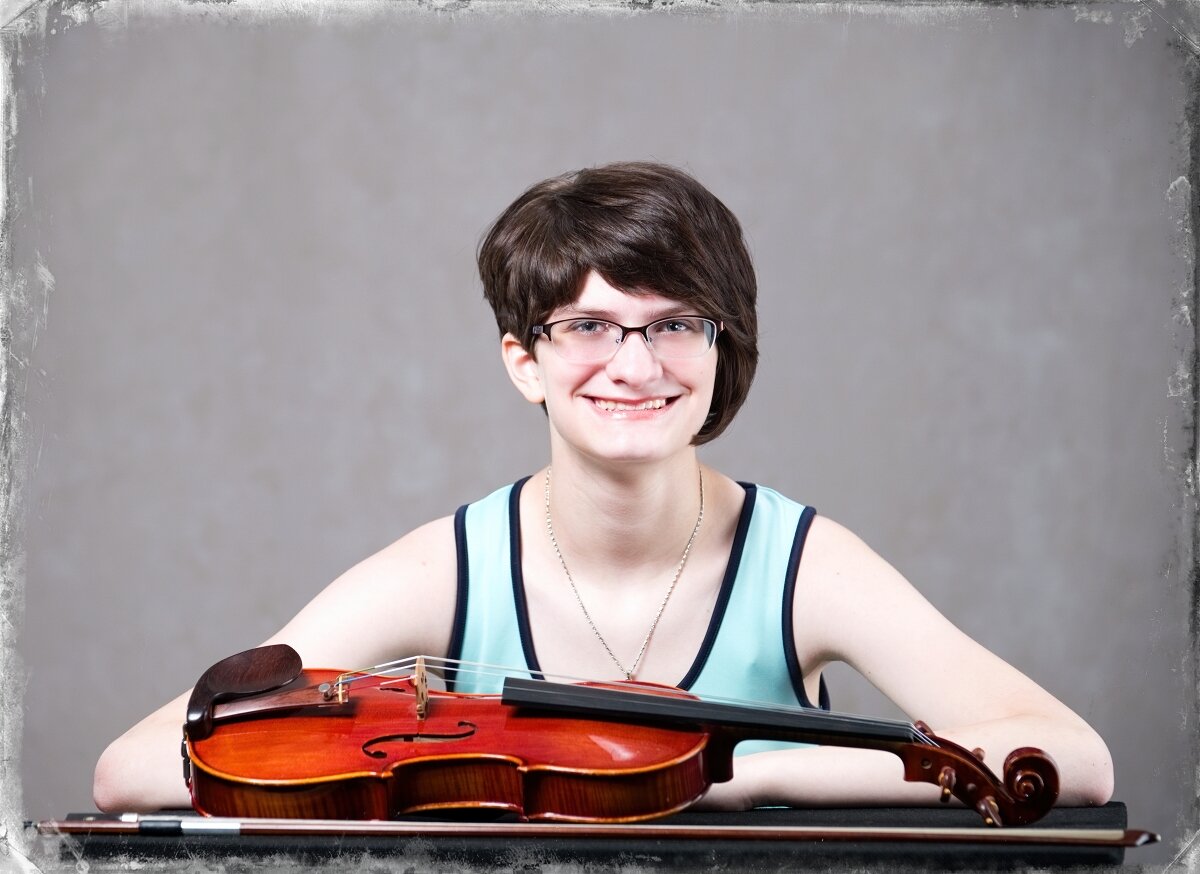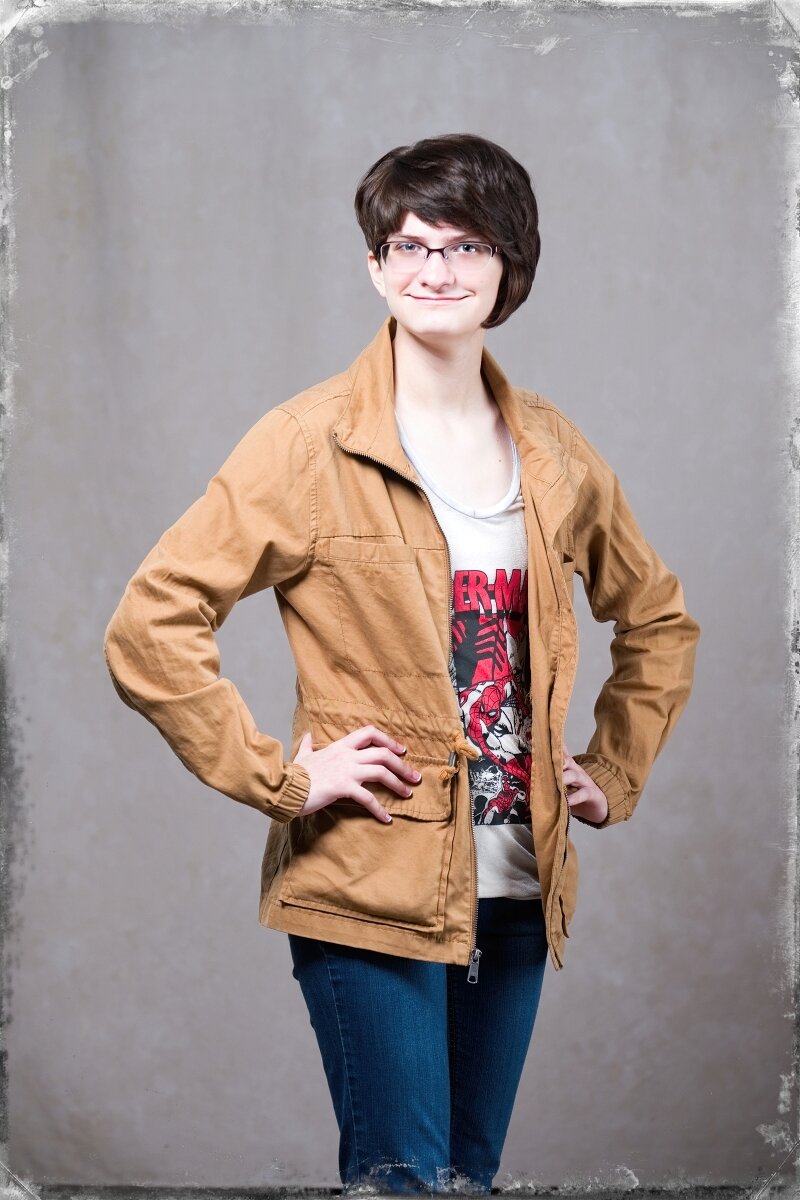I had the pleasure of doing senior portrait sessions for Kyle’s brother and sister in previous years, and enjoyed working with Kyle as well. We captured his interest in filmography during the session.
Emma
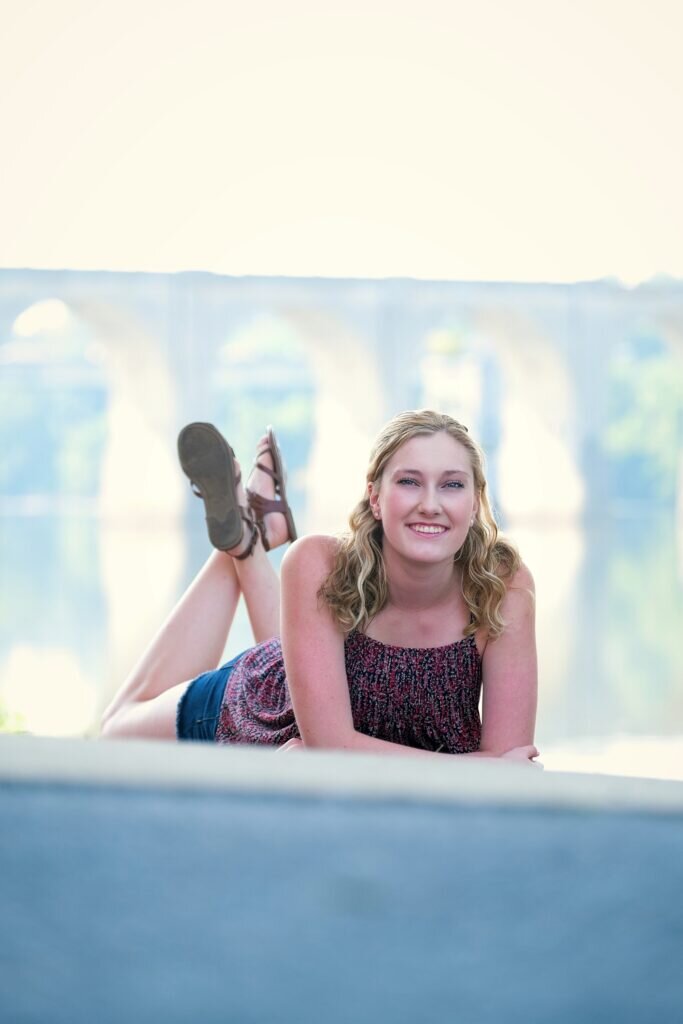
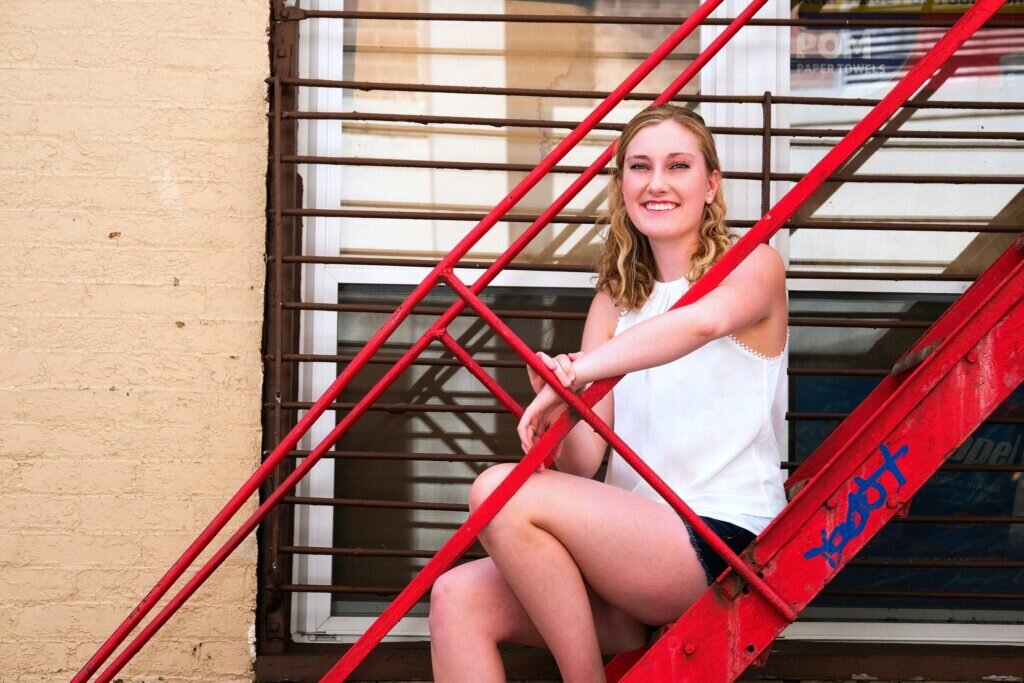
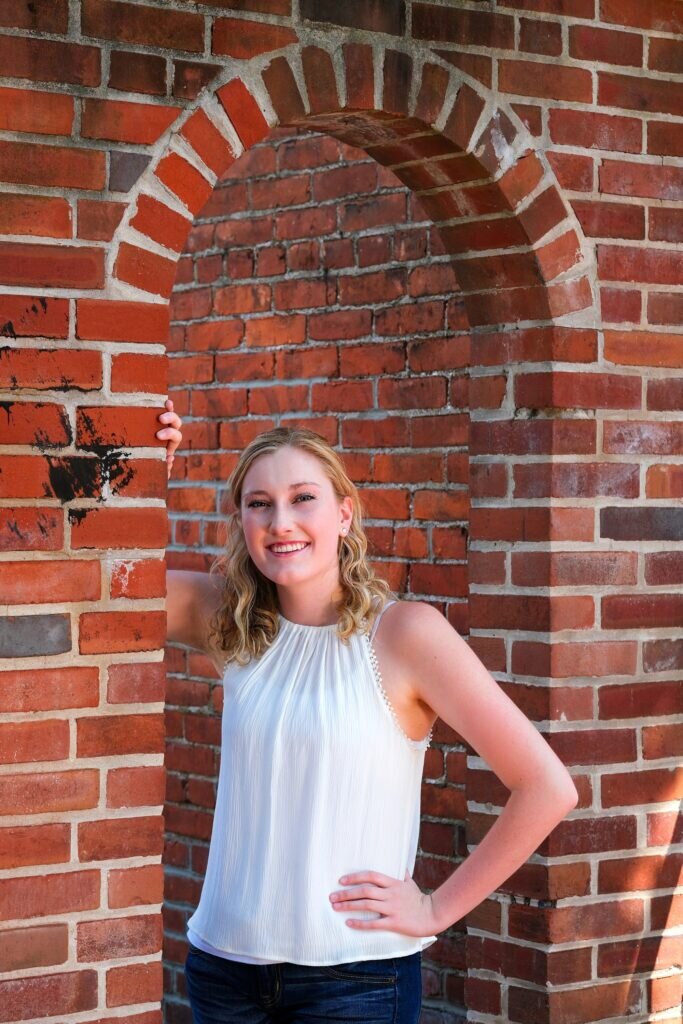
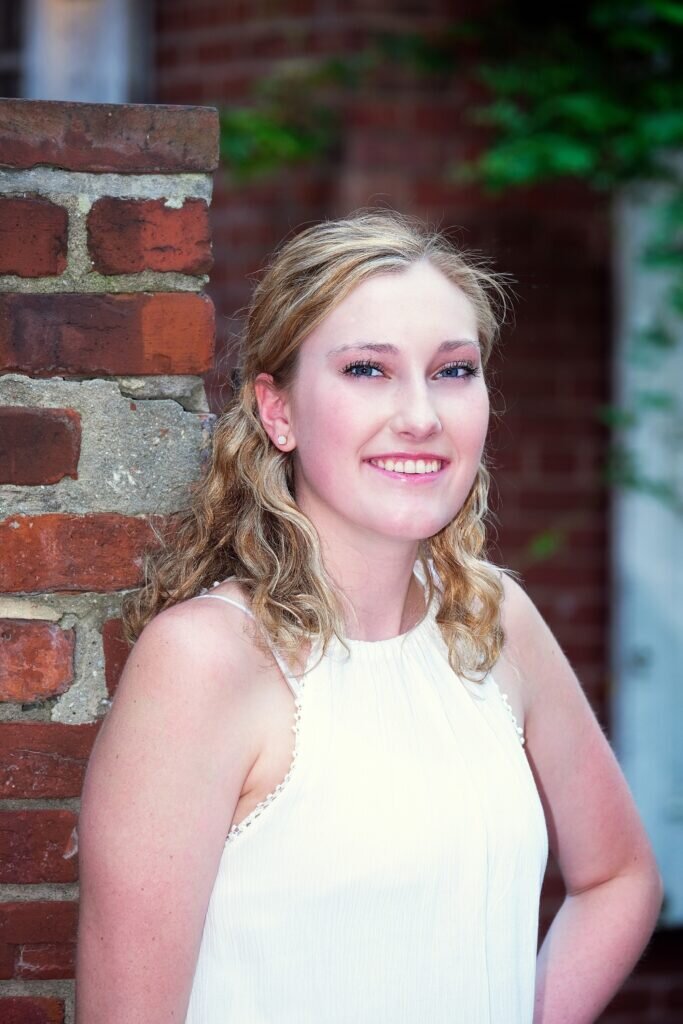
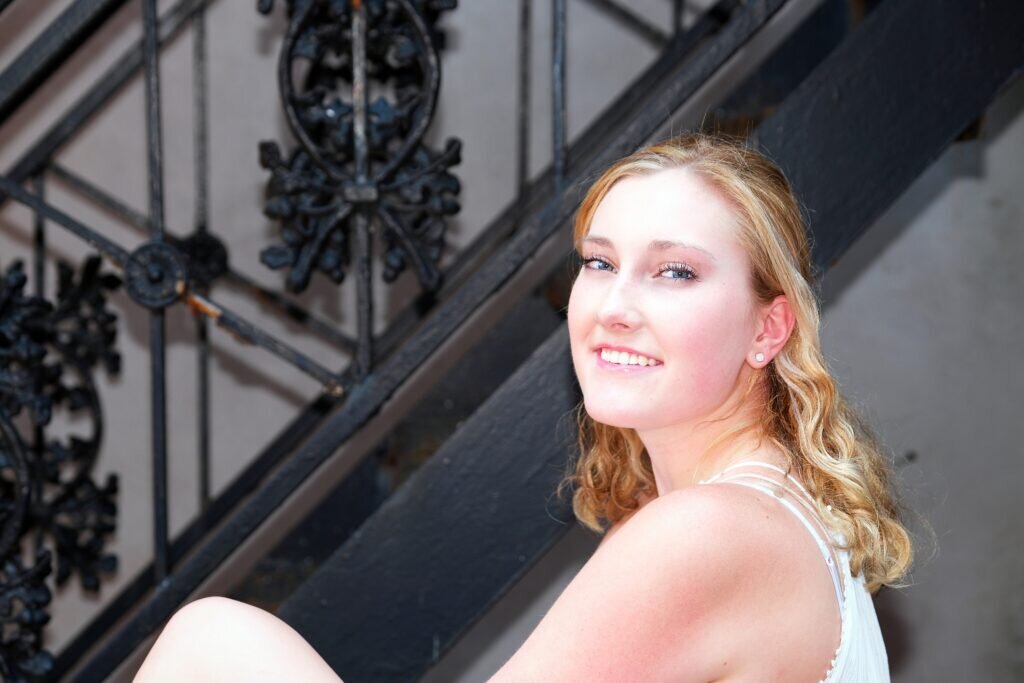
Emma is a member of the Class of 2020, and has been a long-time dancer at The Studio. We wish her the best this fall at DeSales University!
We're now scheduling appointments for senior portraits for members of the Class of 2021. Feel free to use the contact form, or call us at 717 418-9260 to schedule a free consulting session.
Bryson
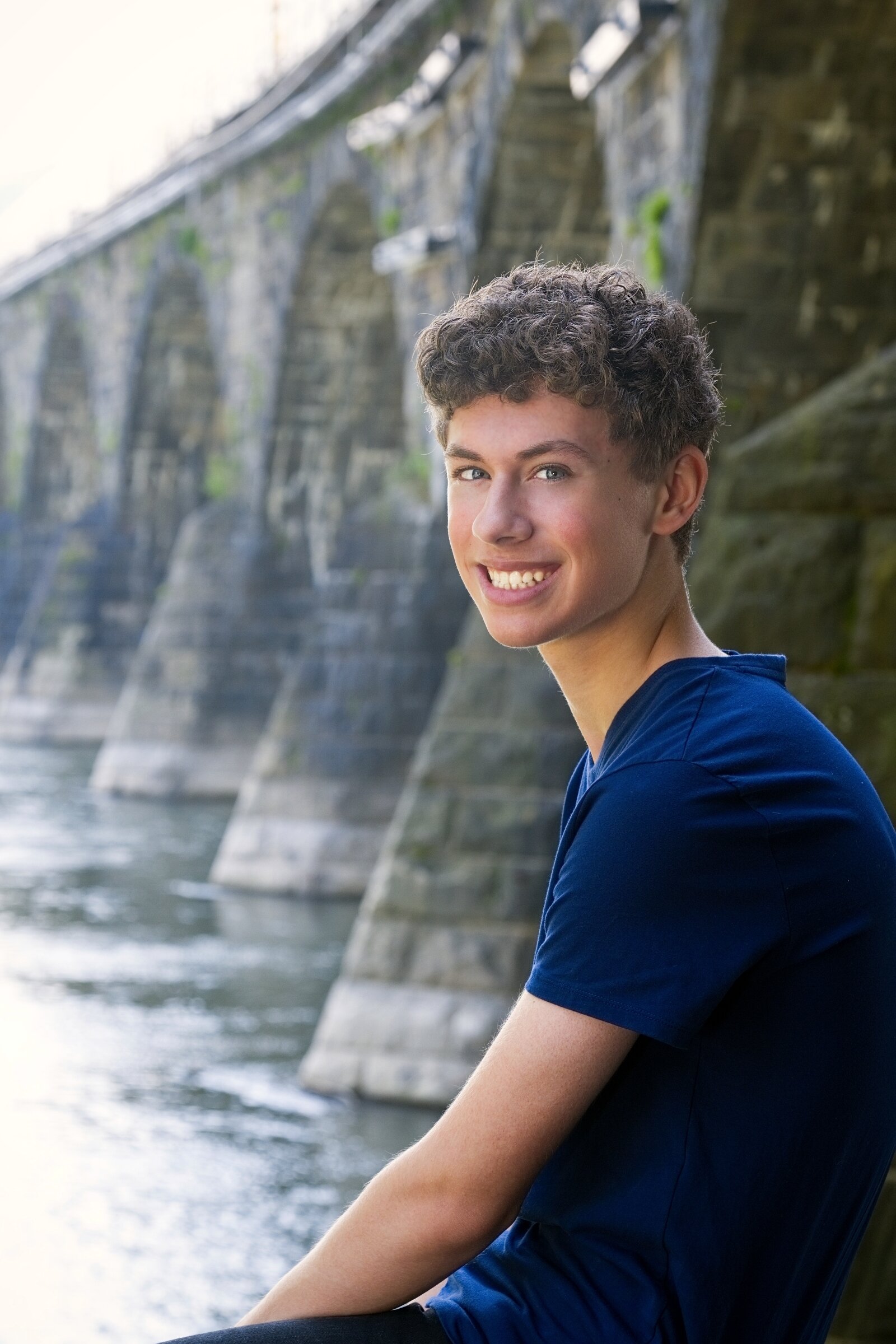
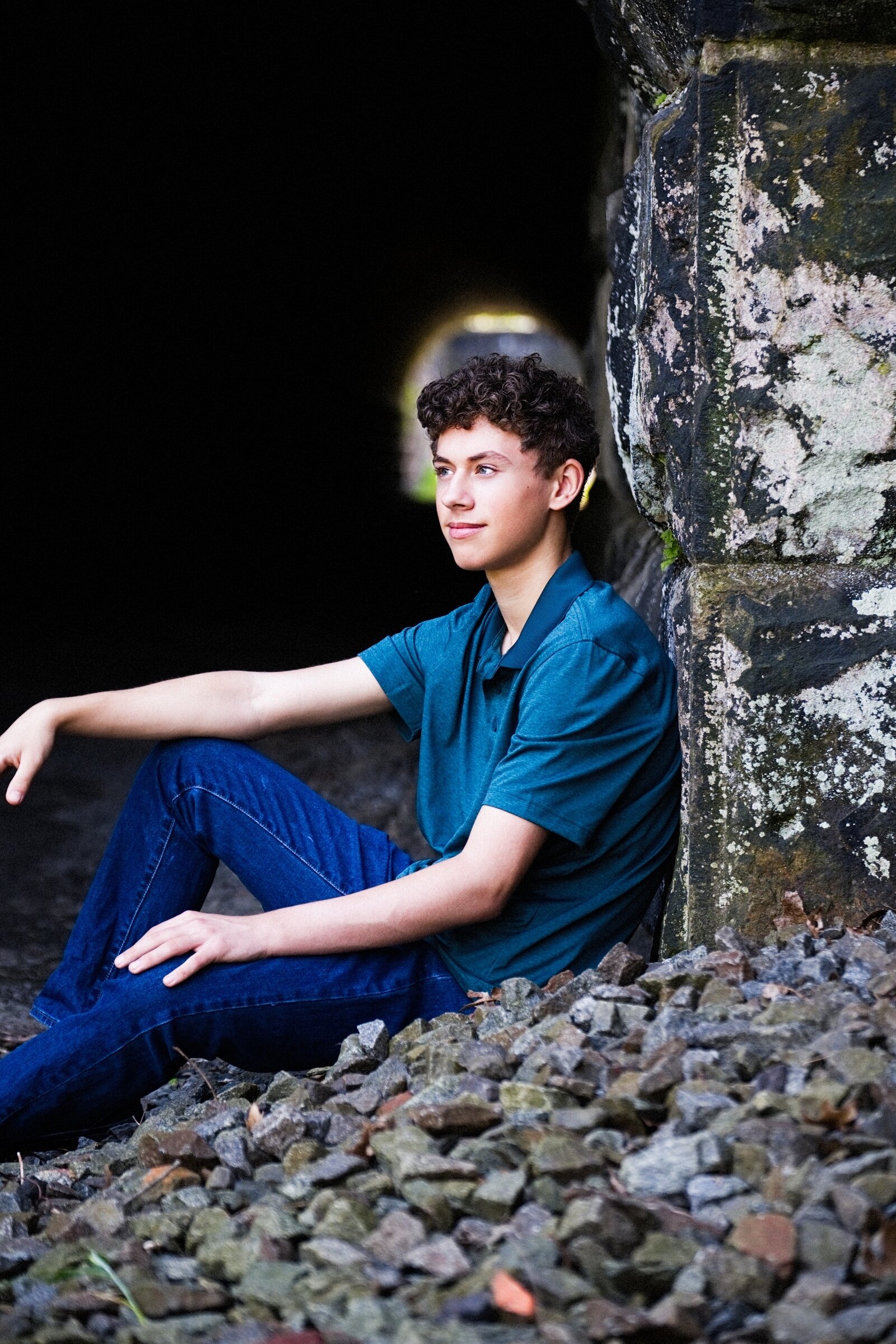

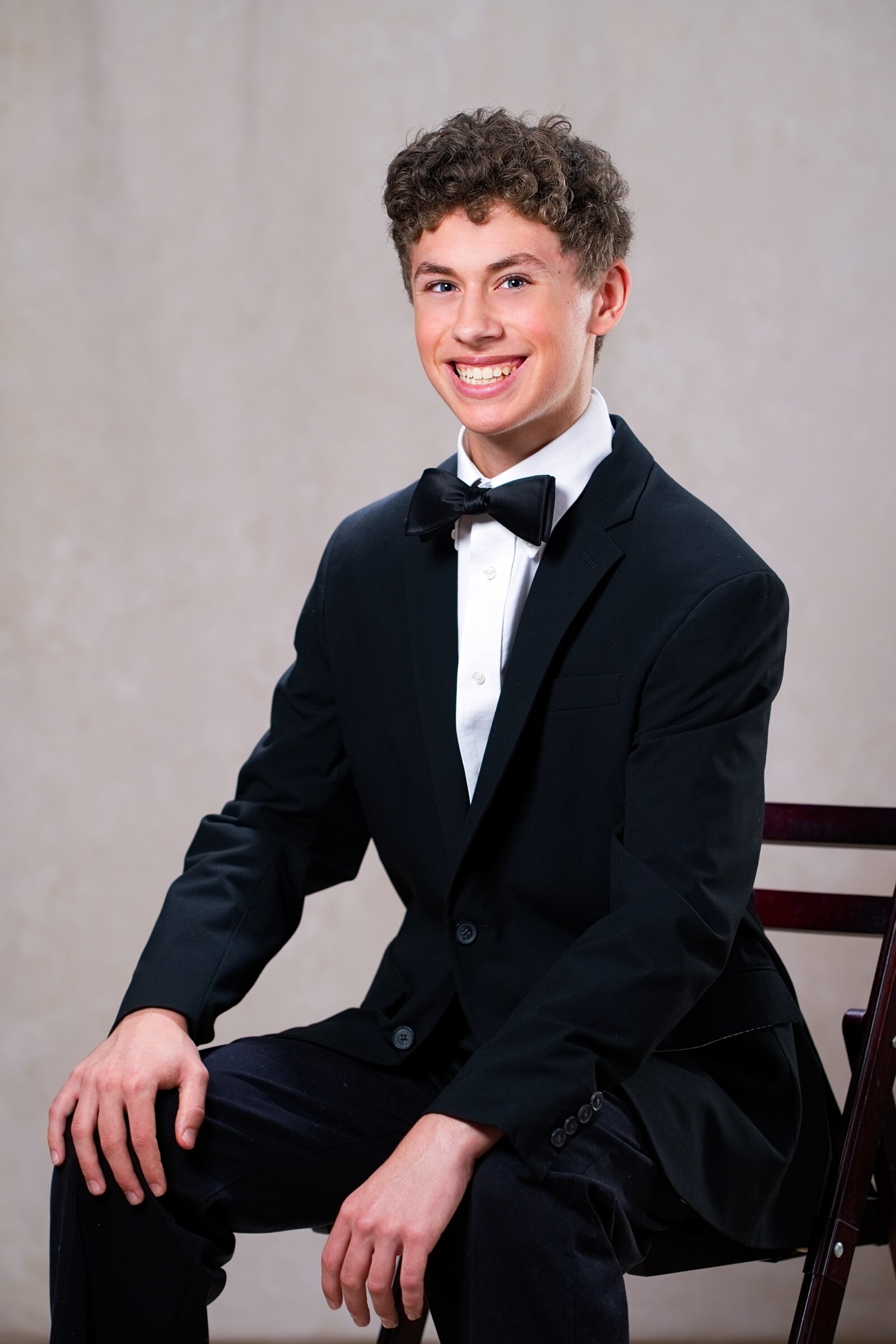
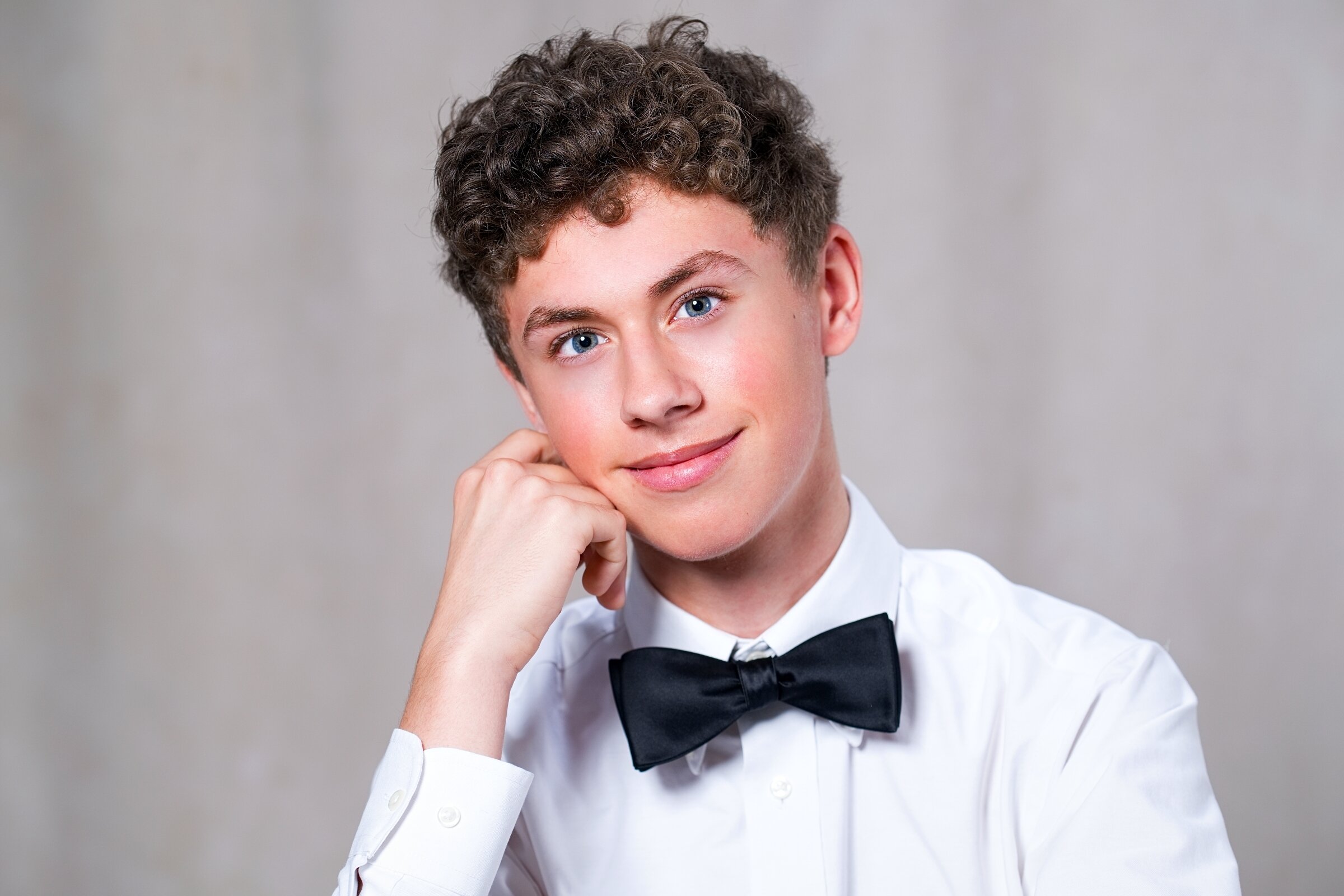
Bryson is a 2020 graduate of Carlisle High School. He participates in band and dance (at the Studio). We captured portraits of him in the Studio and at a nearby park. We wish him the best at Lafayette!
Kylee
Kylee is involved in cheerleading, theater, and music. We captured images of her in the studio and in Harrisburg. Long Shots wishes the best to Kylee and the rest of the Class of 2019!
We'll have limited senior sessions available this summer, so please get in touch with me soon if you are (or are a parent of) a senior graduating in 2020.
Colby
Colby arrived at his session with a lot of ideas, and we were able to capture images of him in him in his fishing, cross country, and swimming gear (he's a swimmer for Susquenita).
Sophia
Sophia is a dancer at The Studio, and active in theater. Her session took us to a nearby theater, City Island, and downtown Harrisburg.
Delaney
Delaney is a dancer at The Studio. We captured some dance portraits in the studio, then ventured to a nearby park and the Susquehanna river to round out her session.
Roe
Roe was one of the Class of 2019 seniors we photographed last summer. She is a visual artist, so we found a way to incorporate that in her session and her image folio as well.
Megan - Cumberland Valley senior
Megan is a long-time dancer at The Studio, so I've taken many of her dance portraits, but this was our first opportunity to work together on a longer session. We shot in some locations around Harrisburg and the Susquehanna River that I hadn't before.
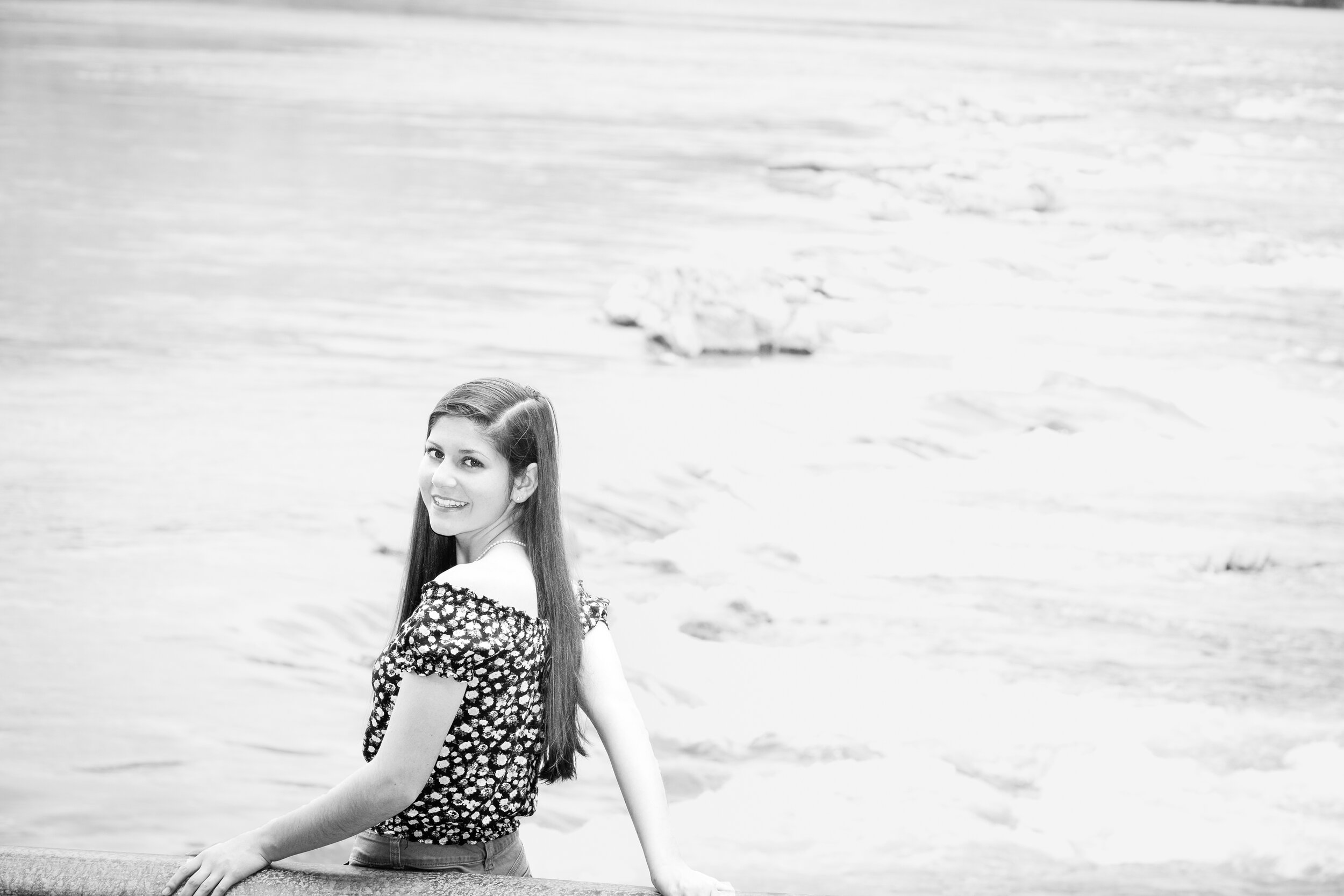
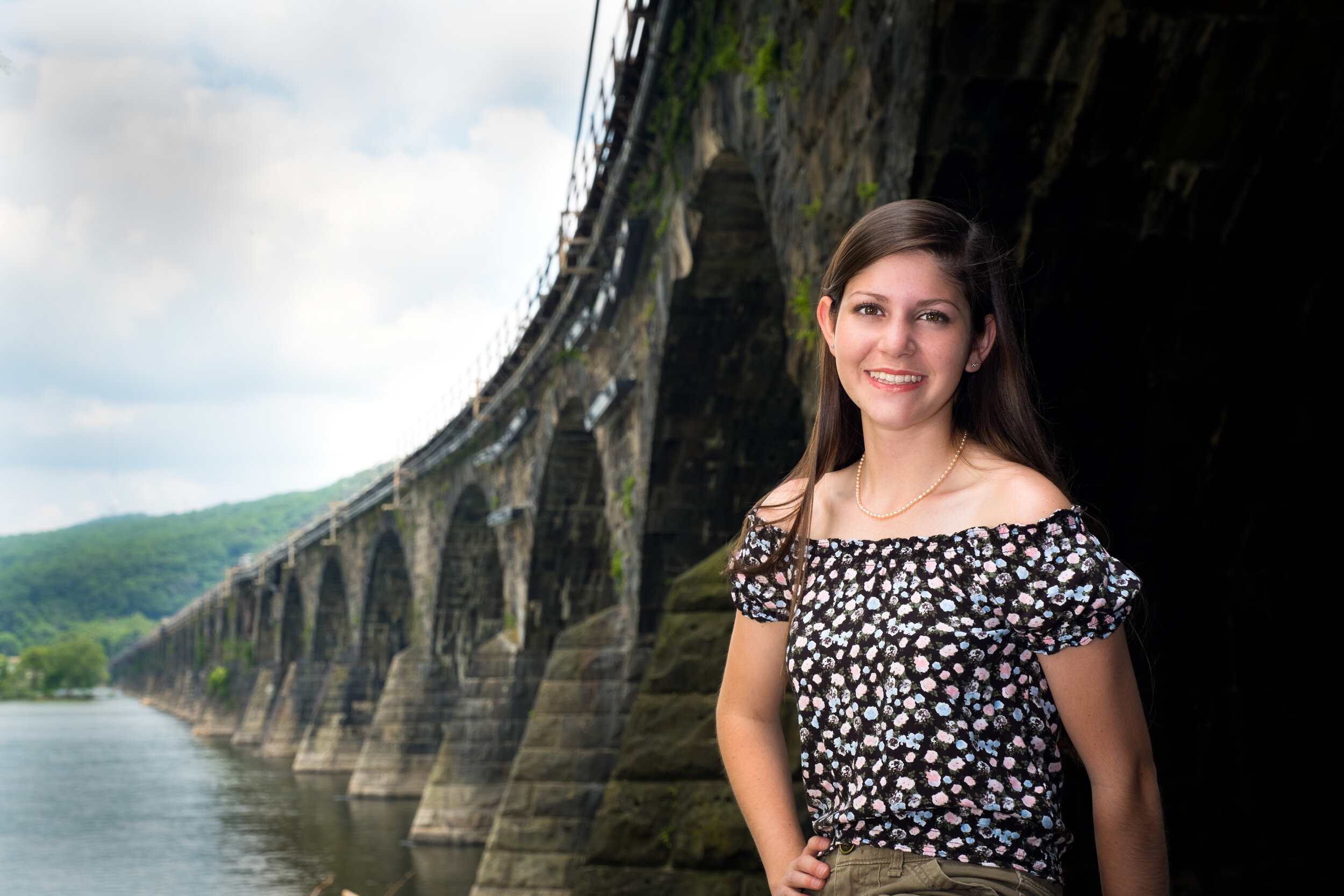
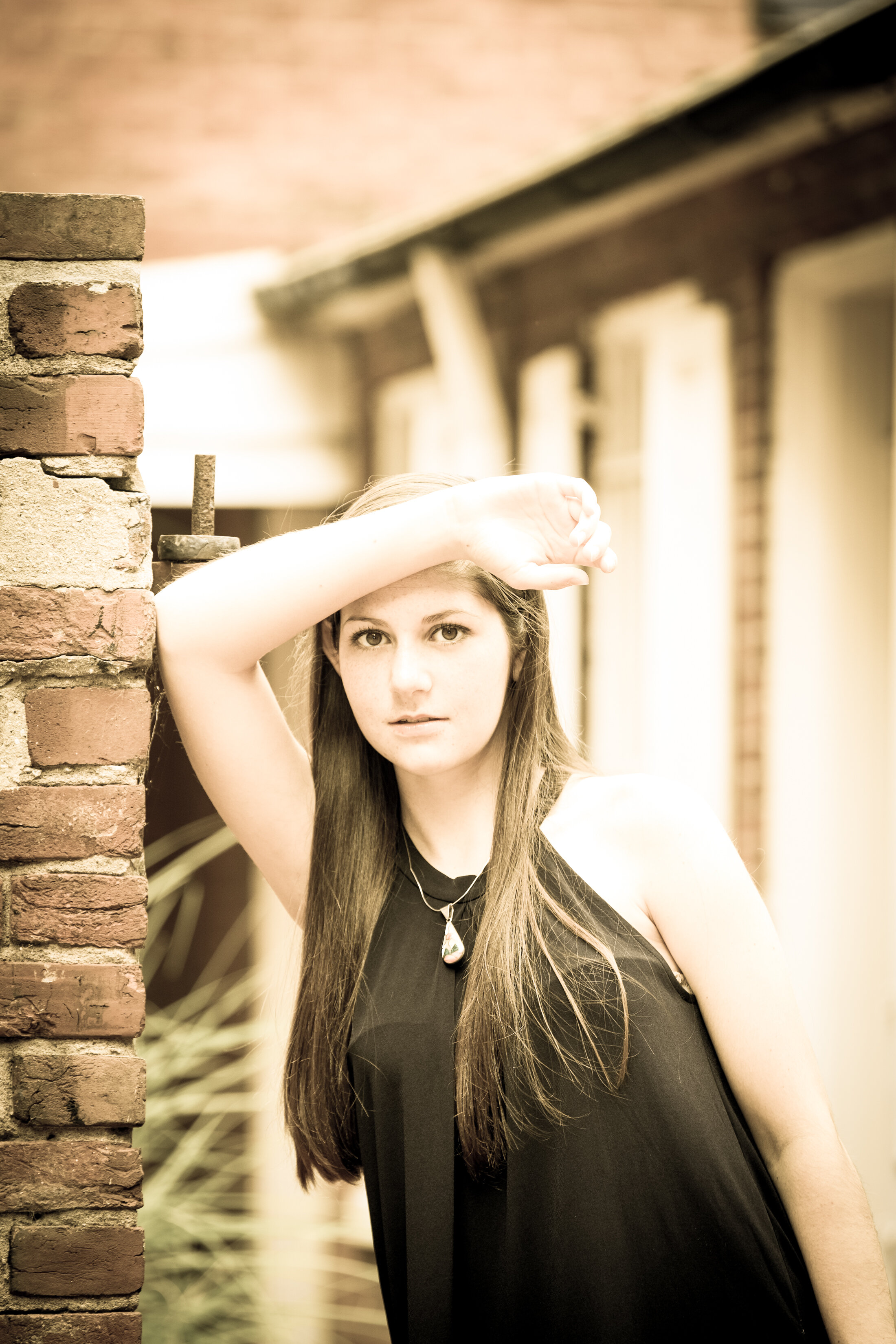
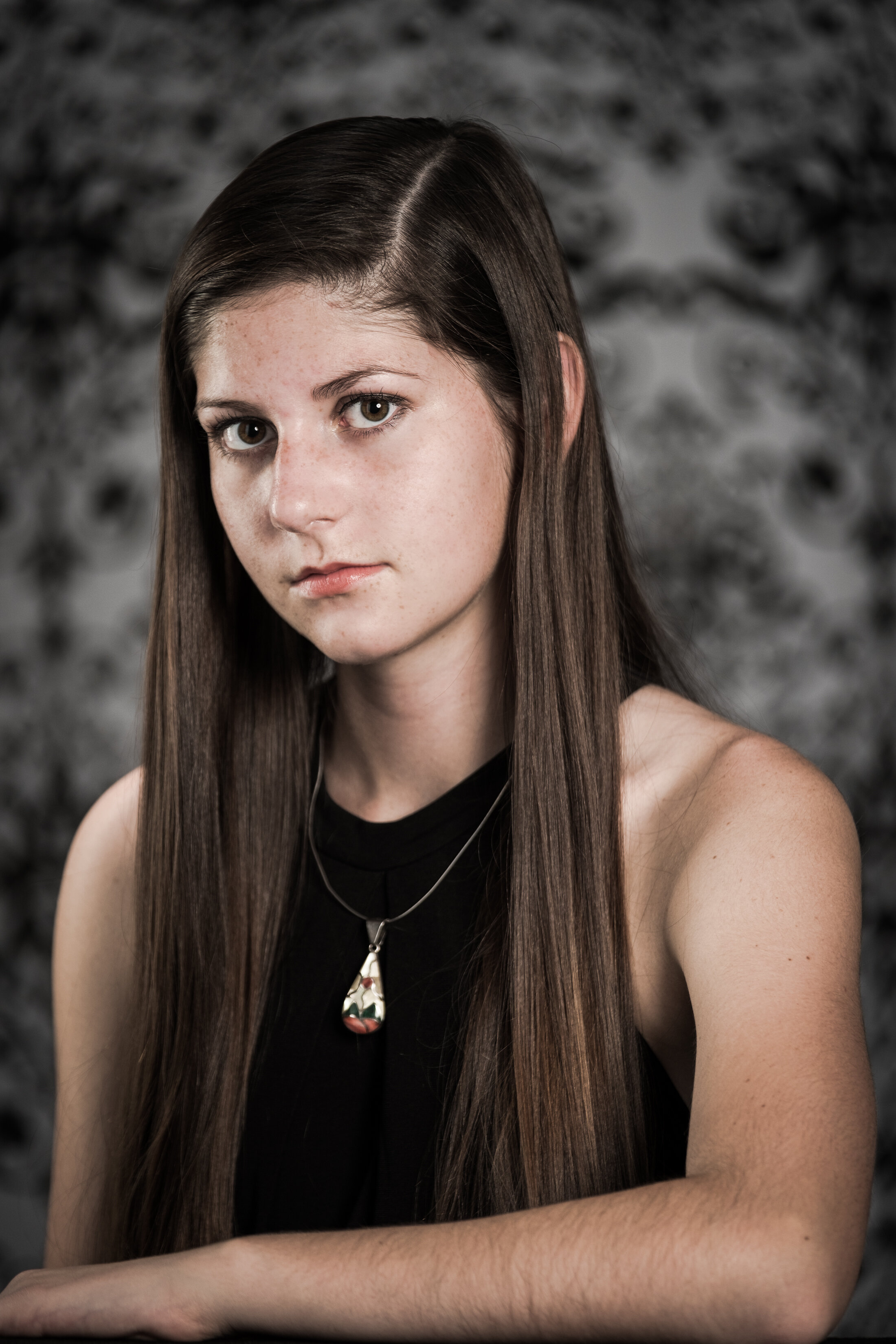
Studio spring 2017 dance photos are ready!
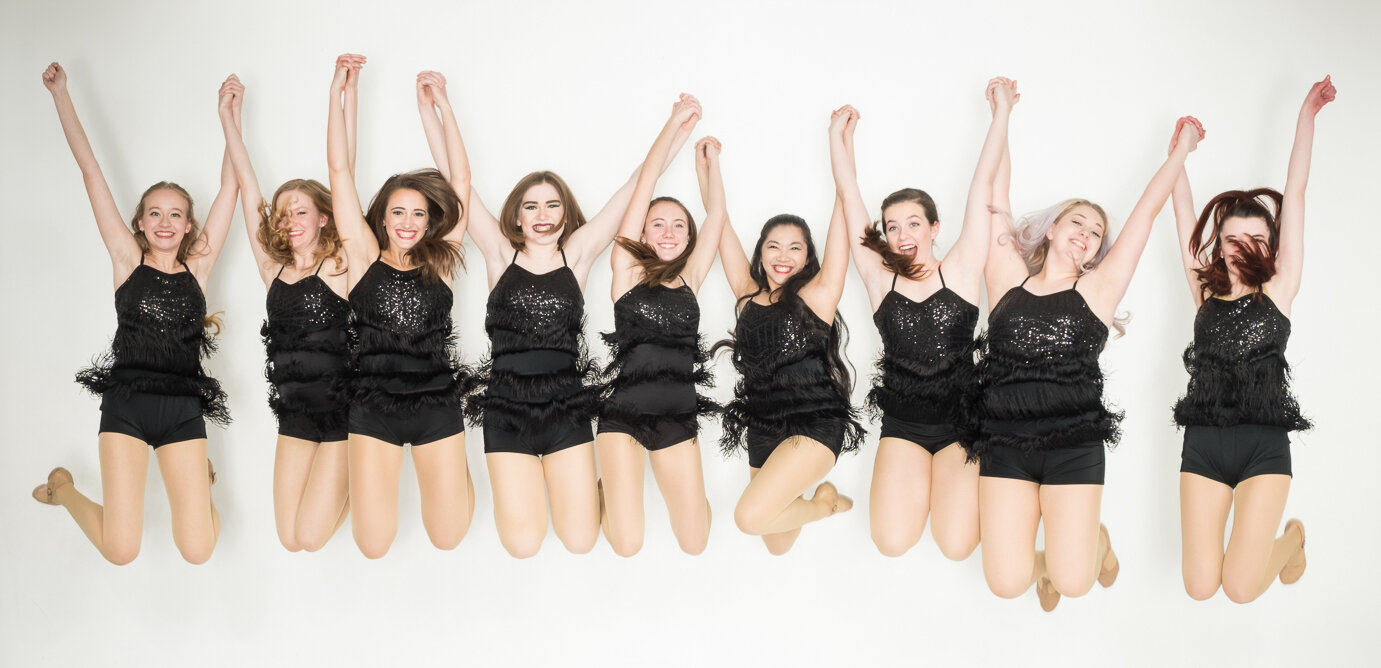 Thank you to the Studio's dancers and families for your support during picture week. All photos are now uploaded to The Studio's gallery page at SmugMug. The password was provided on the handout. Please let me know if you have any questions, and have a great Easter weekend!
Thank you to the Studio's dancers and families for your support during picture week. All photos are now uploaded to The Studio's gallery page at SmugMug. The password was provided on the handout. Please let me know if you have any questions, and have a great Easter weekend!
Kordell - Cedar Cliff senior
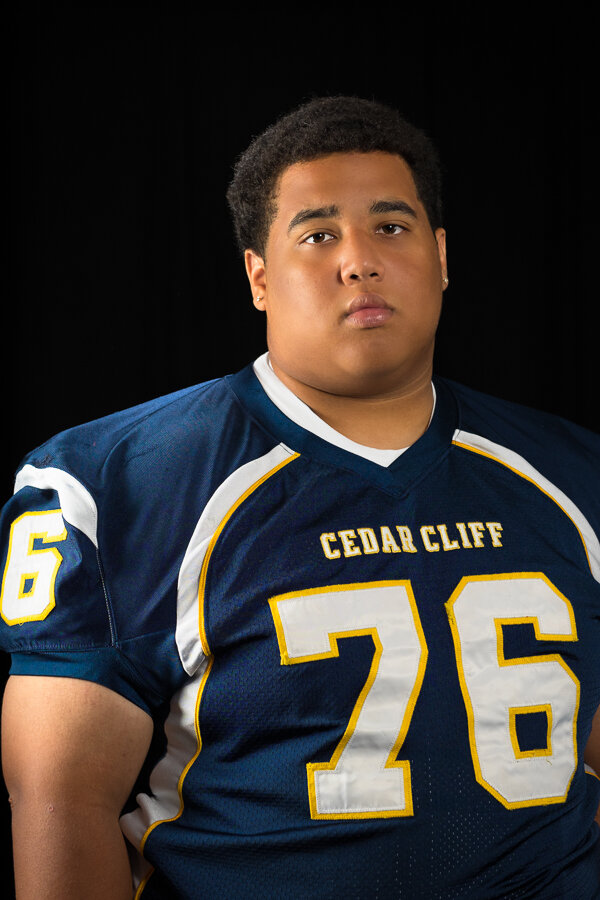 Kordell plays nose tackle, and while he wasn't interested in a photo in his three-point stance, he was willing to wear his jersey for one of his portraits. He was great to work with.
Kordell plays nose tackle, and while he wasn't interested in a photo in his three-point stance, he was willing to wear his jersey for one of his portraits. He was great to work with.
Philip - Mechanicsburg senior
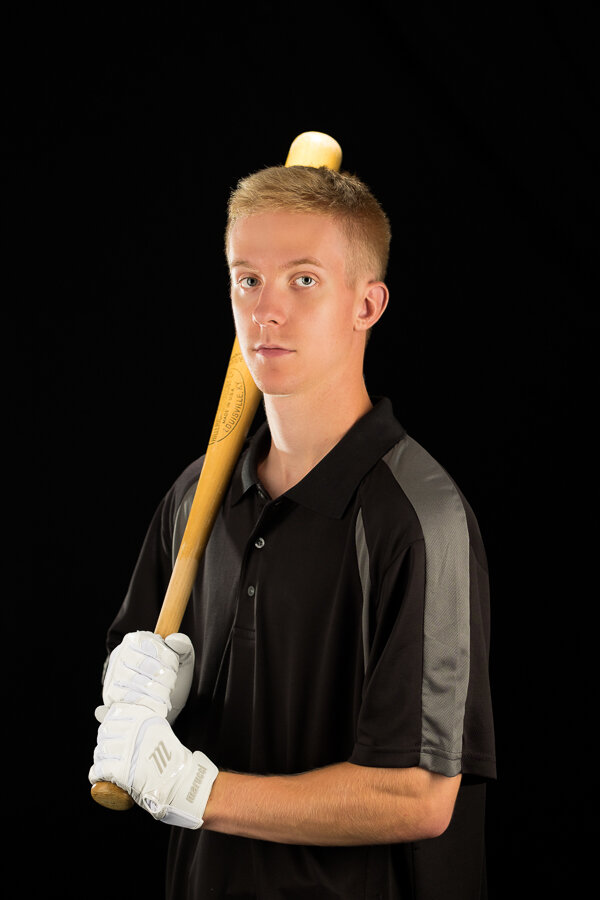 Philip is the third member of his family to have his senior portraits taken at Long Shots, and his session provided an opportunity to incorporate his baseball uniform and equipment. It's been a pleasure to work with his family over the years.
Philip is the third member of his family to have his senior portraits taken at Long Shots, and his session provided an opportunity to incorporate his baseball uniform and equipment. It's been a pleasure to work with his family over the years.
Ten years!
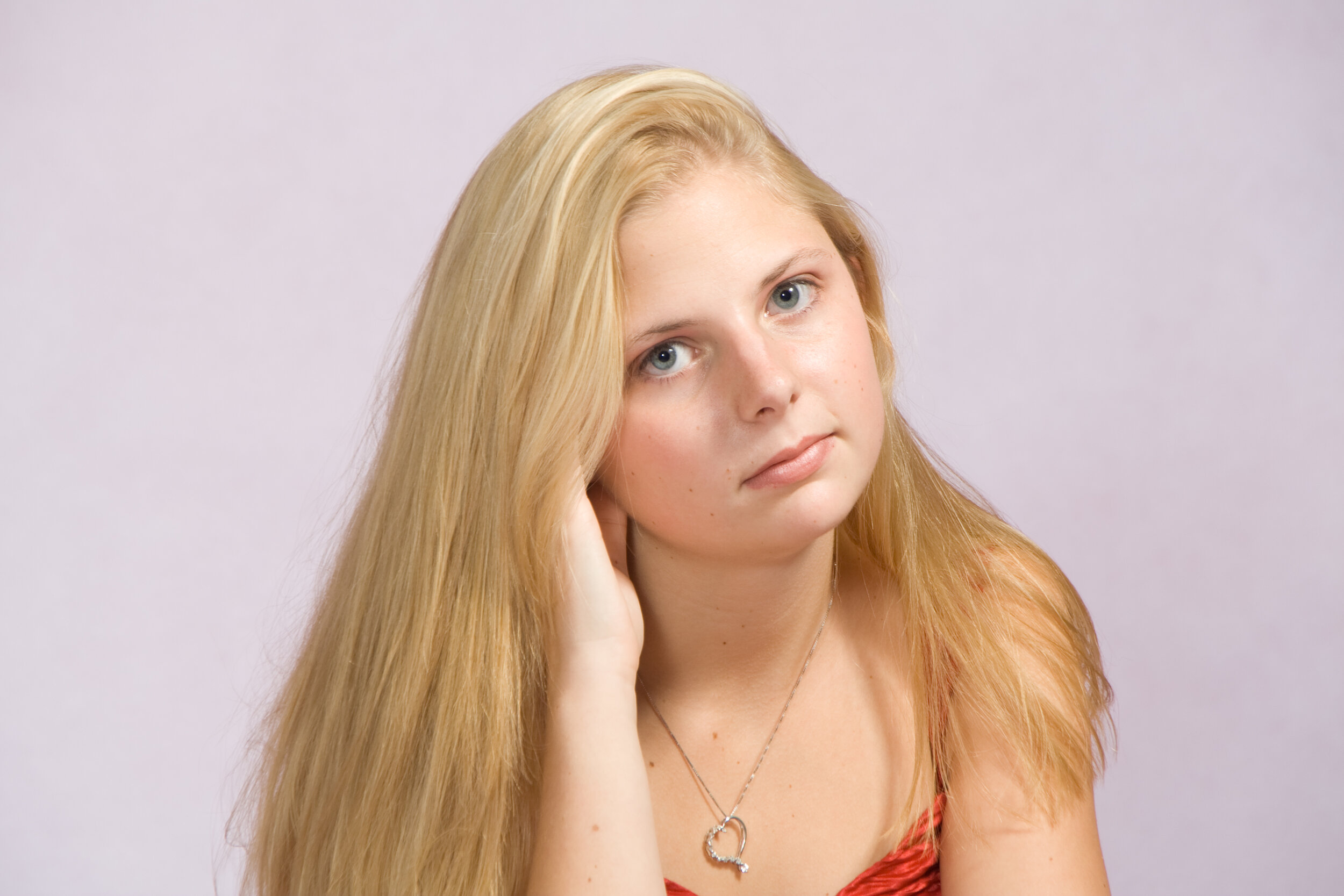 It dawned on me recently that Long Shots Pro Photo has been in business for over ten years! Many thanks to all of you who sought me out for your family and senior portraits over the years, as well as to the Studio parents and dancers who patiently endured lengthy dance picture days (and nights). It's been a pleasure to work with you all, and I hope you are still enjoying the resulting photos.The photo above is from my first high school portrait session in 2007. A few months later, Kelsi was my first senior portrait customer, and just last summer I took a few photos at her wedding!
It dawned on me recently that Long Shots Pro Photo has been in business for over ten years! Many thanks to all of you who sought me out for your family and senior portraits over the years, as well as to the Studio parents and dancers who patiently endured lengthy dance picture days (and nights). It's been a pleasure to work with you all, and I hope you are still enjoying the resulting photos.The photo above is from my first high school portrait session in 2007. A few months later, Kelsi was my first senior portrait customer, and just last summer I took a few photos at her wedding!
PCCA Annual Juried Exhibition Entries
Using a Fuji X-series camera in a studio setting
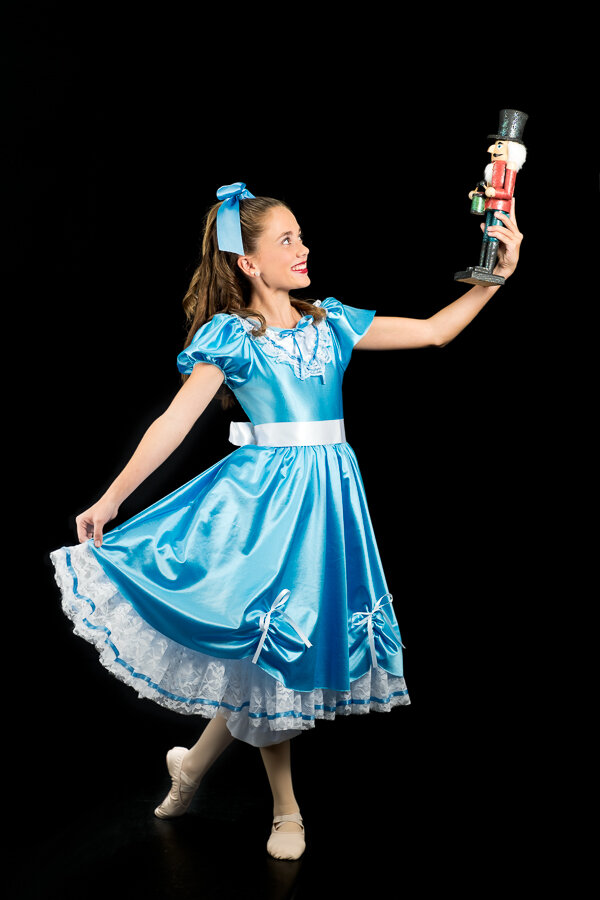 After almost ten years of using a Canon DSLR for studio portraits, I switched to the Fujifilm X-series for my professional work. Most aspects of studio sessions are the same (lighting, etc.), but there are a few camera settings that need to be in place when you're working with studio lighting after you make the change. I provide them here to save other Fuji portrait photographers time after they make the switch.
After almost ten years of using a Canon DSLR for studio portraits, I switched to the Fujifilm X-series for my professional work. Most aspects of studio sessions are the same (lighting, etc.), but there are a few camera settings that need to be in place when you're working with studio lighting after you make the change. I provide them here to save other Fuji portrait photographers time after they make the switch.
- Be sure you're not in silent mode! I like the silent option offered by Fuji's cameras, and typically have that on. (I remembered one reason why when attending a wedding a few weeks ago where the photographer left on the focus beep throughout the entire ceremony.) Unfortunately, you can't be in silent mode and have the hot shoe fire. So when you attach your trigger, be sure to visit the Set-Up menu and set "Sound & Flash Off" to OFF (yes, that's an unfortunate double negative).
- The mechanical shutter must be selected. Again, if it's not the hot shoe will not fire your trigger. Go to the Shooting menu and set the "Shutter Type" to MS (manual shutter).
- Don't preview exposure in manual mode. While this is a nice feature when you're not shooting in a studio setting (or with flash), you don't want it on in a dark studio because it will result in your not being able to see anything through the electronic viewfinder. To turn this off, visit the Set-Up menu, select "Screen Set-Up", and set "Preview Exp./WB in Manual Mode" to OFF.
Why I switched from Canon to Fujifilm
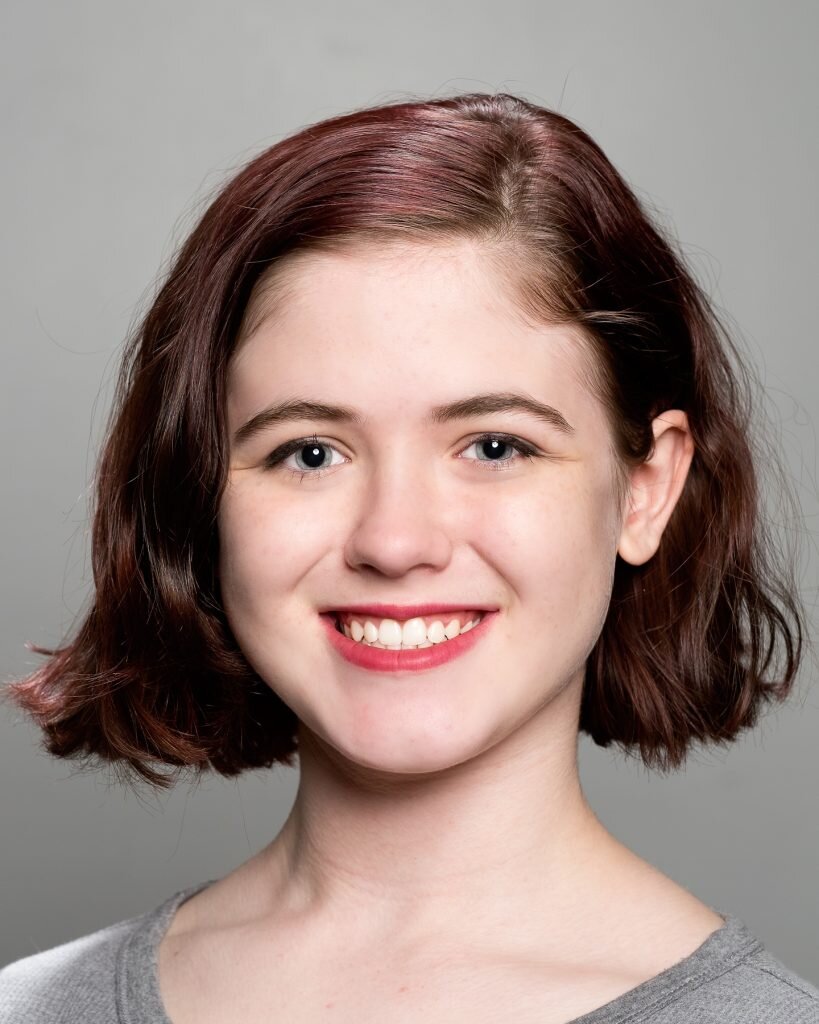 I'm not the first to write about why I've switched from Canon's SLR system to Fujifilm's X-series cameras (see also Mykii and Ivan, among others), but I wanted to share some thoughts for folks who are contemplating such an evolution (or more generally contemplating a move from Canon/Nikon to mirrorless, or getting started with photography).My story begins a few years ago with the Fujifilm X100. I've written about it before, and the popularity of the Fujifilm cameras has grown exponentially since that time. The X100's appearance and controls remind me of the Fuji film SLR I shot with as a kid. I started carrying it for most of my personal photo projects, and it reinvigorated my interest in photography.When Fuji released their X-T1, which uses their X-series lenses, my interest was piqued. I'd made a heavy investment in Canon pro lenses over the years, but my experience with the X100 had been so positive I thought I'd give the X-T1 a try (after reading several positive reviews from pros who'd used test models). I ordered the body and 56mm f/1.2 lens.The switch was not like changing bodies within the Canon system; there was a learning curve involved. Here are some of the difficulties I encountered while adopting the X-T1 for studio portrait photography:
I'm not the first to write about why I've switched from Canon's SLR system to Fujifilm's X-series cameras (see also Mykii and Ivan, among others), but I wanted to share some thoughts for folks who are contemplating such an evolution (or more generally contemplating a move from Canon/Nikon to mirrorless, or getting started with photography).My story begins a few years ago with the Fujifilm X100. I've written about it before, and the popularity of the Fujifilm cameras has grown exponentially since that time. The X100's appearance and controls remind me of the Fuji film SLR I shot with as a kid. I started carrying it for most of my personal photo projects, and it reinvigorated my interest in photography.When Fuji released their X-T1, which uses their X-series lenses, my interest was piqued. I'd made a heavy investment in Canon pro lenses over the years, but my experience with the X100 had been so positive I thought I'd give the X-T1 a try (after reading several positive reviews from pros who'd used test models). I ordered the body and 56mm f/1.2 lens.The switch was not like changing bodies within the Canon system; there was a learning curve involved. Here are some of the difficulties I encountered while adopting the X-T1 for studio portrait photography:
- Exposure preview works differently. The X-T1 uses an electronic viewfinder (EVF) instead of optical viewfinder, which means you're looking through the lens using the camera's exposure settings rather than ambient light. In my case, that meant I saw nothing through the viewfinder since my camera's exposure was set for my studio strobes. It turns out this is a setting that can be modified via a menu setting, but at first I did not understand what was going on.
- The hot shoe didn't work! That's what I thought, anyway, when I couldn't get it to fire an external flash or activate my strobe triggering system. Again, it turned out I just needed to turn off silent mode to make this work, but it caused some confusion until I performed the right Google search.
- No Lightroom tethered shooting. When working in the studio, I like to shoot tethered. This means as I shoot the photos are transferred to Lightroom on my laptop and I can see them on the laptop's large screen. It took a few months for a tethered shooting plug-in to be released.
- Tethered shooting does not write to the SD card. One of the reasons I liked tethered shooting with my Canons is because a copy of the photo was written to the SD card and to my laptop drive. I find this reassuring, as drives sometimes go bad, and having two copies provides a backup. I would like to see Fuji add this capability via a firmware update.
So to summarize the bad points of my transition, there was a learning curve involved, and tethered shooting does not result in two copies of each photo (although Lightroom can be configured to create a second copy on the fly to compensate).Another issue that some have cited as a struggle with the transition to Fuji from Canon or Nikon is that the autofocus wasn't as fast. For me, it was a wash (and in fact the Canons fell behind once Fuji introduced a major autofocus firmware upgrade last year). My last two Canon cameras were the 5D Mark II (aka 5D2) and 6D. I had been using the 5D2 for video, but purchased a dedicated video camera system and no longer required the capability on my SLR. So when it was time to upgrade from the 5D Mk II, I opted for the 6D, which allegedly had the still photo capabilities of the 5D Mk III. I found it to be a disappointment. The autofocus was no better than the 5D2, there were only nine focus points, and Canon had cut corners in design such as eliminating the "joystick" selector control on the back of the camera.Now on to the good points of my transition:
- Price - Fujifilm's body and lens offerings are significantly less expensive than Canon's equivalents
- Footprint - Fujifilm bodies and lenses are smaller and lighter than their Canon equivalents
- Intrusiveness - Due to their smaller size, Fujifilm cameras do not come between me and my subjects to as great an extent as my Canons; in addition, I am less conspicuous when using the camera for street, travel, and event photography (Fuji cameras also offer silent mode, which makes them less noisy)
- Controls - Fujifilm camera controls are largely external, which reminds me of my film SLR; there are dedicated dials for speed, aperture, and ISO, and I spend less time digging through menus
- Features - From their film simulations (some of which imitate the leading films they used to sell) to panoramic capabilities to the ability to shoot multiple images simultaneously, the X-T1 just does more than my 6D
- Firmware upgrades - This is huge: Rather than having to wait for the next generation of a camera body (and its associated cost), Fuji frequently introduces new capabilities to their cameras via free firmware updates
- More focal points - It should be embarrassing to Canon that the less expensive X-T1 has more (and more flexible) focus points than the 6D
- More consistent tethered shooting performance - While I miss how Canon tethered shooting wrote to both the card and computer, I don't miss how the 5D and 6D occasionally lost its mind when tethered shooting (which required various reconnection efforts and introduced delays during shoots)
- Better build quality - Fujis cameras and lenses are made of metal and assembled in Japan
- Image quality - Great skin tones are frequently cited as a strength of Fujifilm cameras, as Harlie's photo above can attest
- Usable jpegs - I always shot in raw format when using my Canons, but the image quality of the jpegs that come from the X-T1 is so good I often use what comes from the camera rather than depending on the raw conversion in Lightroom
- Lenses - Fujinon lenses are arguably the best in the industry, and can be found in endoscopes, satellites, and Hasselblads
After a few months of using both the 6D and X-T1, I chose to sell the 6D and all of my Canon lenses, and I haven't missed them since.The mirrorless vs SLR debate reminds me of the film vs digital debate that took place last decade. There are reasonable arguments to be made supporting conventional SLRs (especially for wildlife and sports photographers), but the tide toward mirrorless suggests that ten years from now the SLR holdouts will be a small minority.I've created a gallery of photos taken both my Canon 6D and Fujifilm X-T1 for those interested in comparing image quality.If you're looking to get started with serious digital photography, or tired of lugging around oversized equipment, check out the mirrorless cameras and interchangeable lens systems offered by Fuji, Olympus, and Sony. I don't think you'll regret it.
Recital Weekend!
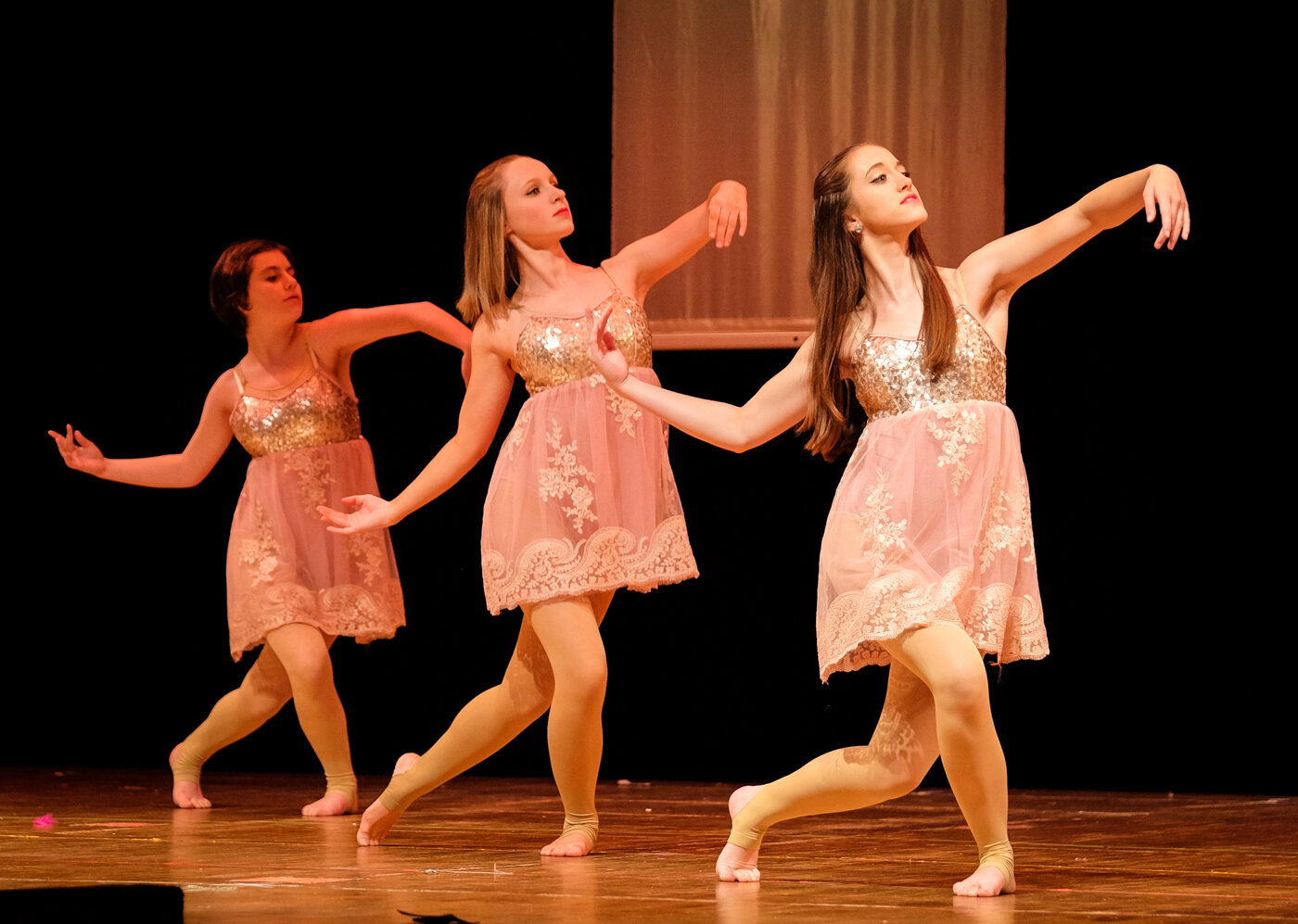 Hi, Studio parents. While you're waiting for the performance to start or the intermission to end, feel free to browse the 2016 performance photos. If your dancer's trading cards sold out, you can order them from the gallery this weekend only at recital pricing.I hope you enjoy the performance. Thank you for your support this year!
Hi, Studio parents. While you're waiting for the performance to start or the intermission to end, feel free to browse the 2016 performance photos. If your dancer's trading cards sold out, you can order them from the gallery this weekend only at recital pricing.I hope you enjoy the performance. Thank you for your support this year!
A trading card workflow using Adobe Lightroom and the Canon Pro-100 printer
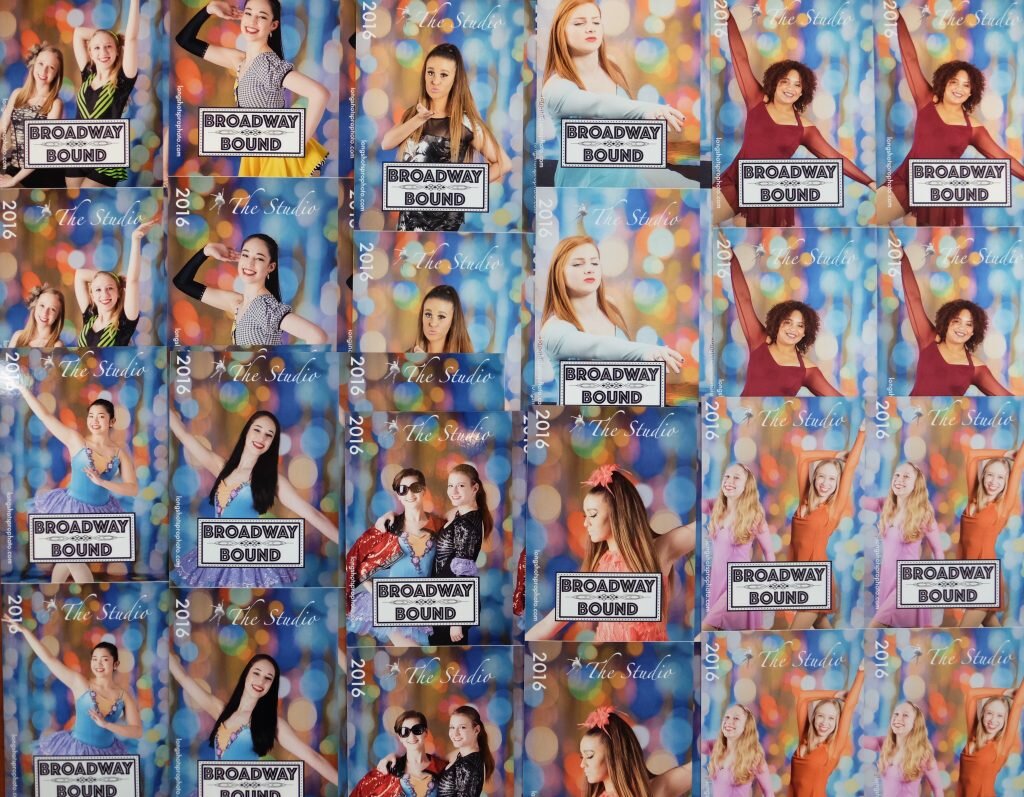 I recently tasked myself with creating dancer trading cards for The Studio's spring recitals. This involved producing 2.5" x 3.5" (baseball card-sized) cards of over 700 dance portraits.First I needed media. I ordered some 2.5" x 3.5" artist cards, but found that none of my printers could print on media that small (and those cards are not ideal for printing anyway). Then, with the assistance of math and the Googles, I realized that photo printer-friendly 5x7 paper would perfectly accommodate four trading cards. I ordered three different brands of glossy 5x7 paper that had received good ratings, and they all proved to be of good quality.Next I went about creating the design in Photoshop. Lightroom permits you to print a watermark on a given photo, but that watermark can be any collection of graphics. Mine included the Studio logo, the year, and the recital logo. I created it as a transparent png and pointed to it from Lightroom's print module. My test of superimposing it on a dance photo was successful, although I noticed a full-length portrait on a 2.5x3.5 card would result in a very small dancer.That meant I had a lot of cropping to do. Since Lightroom Mobile is quick when it comes to cropping, I synced the dance portrait collection to the Adobe cloud so it would be available on the iPad. Cropping 700+ portraits to fit the trading card format still wasn't fast, but took less time than it would have on the computer.With the cropped collection back in Lightroom, I worked in the print module to place four watermarked cards on a 5x7 sheet. That done, I printed the entire collection to jpg files. Then I imported those files into Lightroom as a new collection.Why print to files first instead of 5x7s? That's where the Canon Pro-100 became a factor. There are issues with that model of printer and Lightroom. (I can certainly attest to this after numerous frustrating failed attempts to print borderless 13x19s from Lightroom.) Thankfully, Canon produces a Lightroom plugin called Print Studio Pro that makes everything work (once the watermark is already applied).From that point, the challenge was reloading paper and depleted ink cartridges (and making several ink cartridge orders from B&H), then sorting the photos into age groups.
I recently tasked myself with creating dancer trading cards for The Studio's spring recitals. This involved producing 2.5" x 3.5" (baseball card-sized) cards of over 700 dance portraits.First I needed media. I ordered some 2.5" x 3.5" artist cards, but found that none of my printers could print on media that small (and those cards are not ideal for printing anyway). Then, with the assistance of math and the Googles, I realized that photo printer-friendly 5x7 paper would perfectly accommodate four trading cards. I ordered three different brands of glossy 5x7 paper that had received good ratings, and they all proved to be of good quality.Next I went about creating the design in Photoshop. Lightroom permits you to print a watermark on a given photo, but that watermark can be any collection of graphics. Mine included the Studio logo, the year, and the recital logo. I created it as a transparent png and pointed to it from Lightroom's print module. My test of superimposing it on a dance photo was successful, although I noticed a full-length portrait on a 2.5x3.5 card would result in a very small dancer.That meant I had a lot of cropping to do. Since Lightroom Mobile is quick when it comes to cropping, I synced the dance portrait collection to the Adobe cloud so it would be available on the iPad. Cropping 700+ portraits to fit the trading card format still wasn't fast, but took less time than it would have on the computer.With the cropped collection back in Lightroom, I worked in the print module to place four watermarked cards on a 5x7 sheet. That done, I printed the entire collection to jpg files. Then I imported those files into Lightroom as a new collection.Why print to files first instead of 5x7s? That's where the Canon Pro-100 became a factor. There are issues with that model of printer and Lightroom. (I can certainly attest to this after numerous frustrating failed attempts to print borderless 13x19s from Lightroom.) Thankfully, Canon produces a Lightroom plugin called Print Studio Pro that makes everything work (once the watermark is already applied).From that point, the challenge was reloading paper and depleted ink cartridges (and making several ink cartridge orders from B&H), then sorting the photos into age groups.
New for 2016 Studio recitals: Trading cards
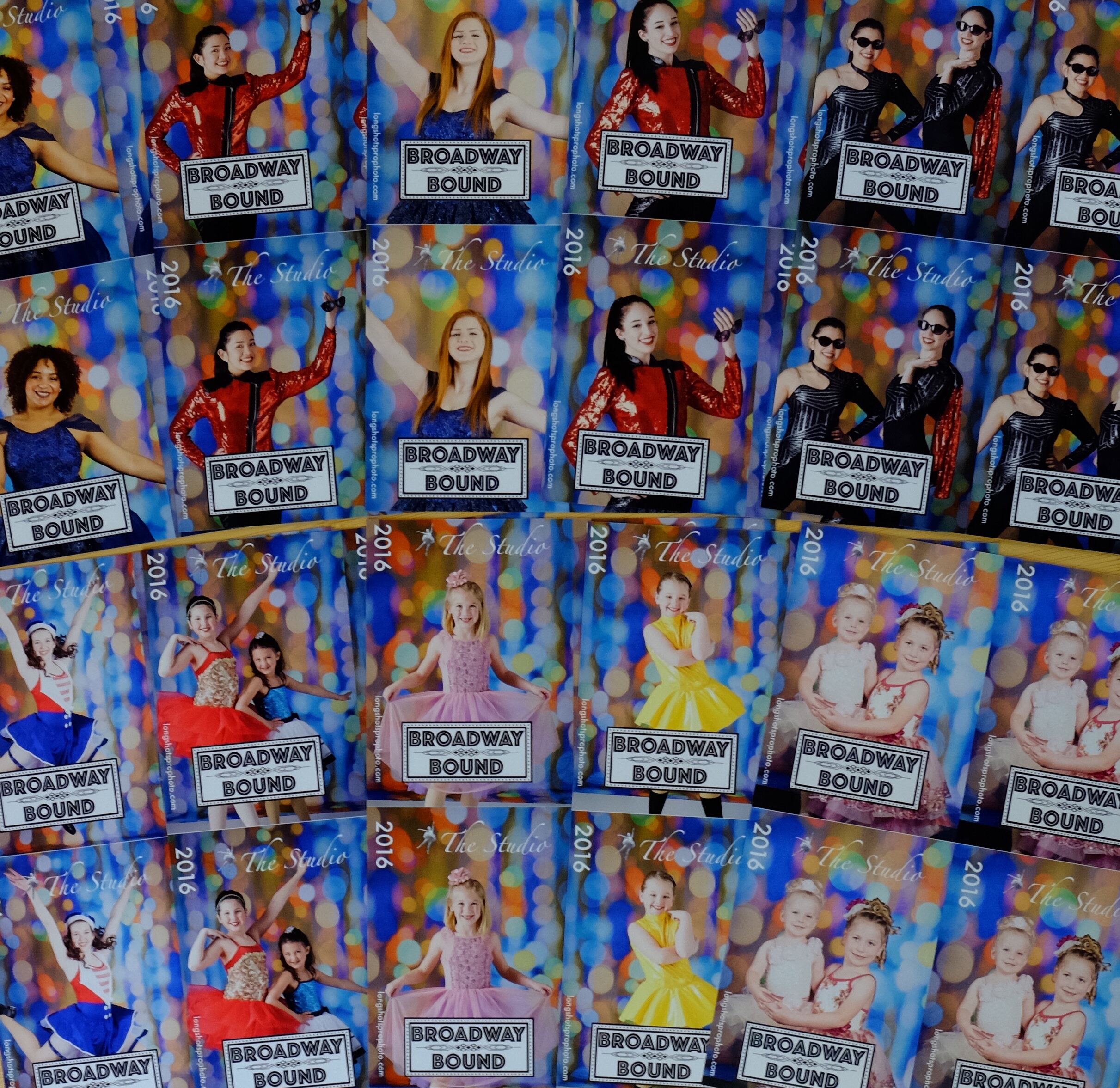 During the past couple of years, folks have expressed to us how they missed having the candy bar keepsakes (with dancer photos on them) from the dance recitals. I spent some time thinking of something we could produce to replace them, and after putting together a workflow that allowed us to do so almost 800 times, we're ready to share the idea with you.The 2016 recitals will include the debut of Studio trading cards. They will be available in sheets of four; the photo printer-friendly size of 5" x 7" will exactly accommodate four baseball card-sized (2.5" x 3.5") trading cards.Each card includes the Studio logo, the year, and the recital logo. We wanted to keep them inexpensive, so for the weekend of the recital they will be $4 per page ($1 per trading card). After the recital weekend, the price will go up to the standard 5x7 print cost.Due to the size and orientation of the group shots, they are not available as trading cards, but almost all of the individual and friend photos we took on picture days will be represented (over 700 of them, which will be sorted into separate bins by age group). Each page contains four identical trading cards, so you'll have extras to share with friends and family, or to trade with fellow dancers. (You might want to bring a pair of scissors--provided you don't run with them-- to the recital to cut out the individual cards, and a marker to add an autograph.)In case the cards you are seeking sell out, a SmugMug gallery will have all of the cards available for order at the same special pricing (plus shipping and handling) during the recital weekend.The prints were produced using a dye sublimation printer on glossy photo paper. I think you'll be pleased with the quality and look forward to your feedback. We hope that Studio trading cards become a pleasant addition to your recital weekend tradition.
During the past couple of years, folks have expressed to us how they missed having the candy bar keepsakes (with dancer photos on them) from the dance recitals. I spent some time thinking of something we could produce to replace them, and after putting together a workflow that allowed us to do so almost 800 times, we're ready to share the idea with you.The 2016 recitals will include the debut of Studio trading cards. They will be available in sheets of four; the photo printer-friendly size of 5" x 7" will exactly accommodate four baseball card-sized (2.5" x 3.5") trading cards.Each card includes the Studio logo, the year, and the recital logo. We wanted to keep them inexpensive, so for the weekend of the recital they will be $4 per page ($1 per trading card). After the recital weekend, the price will go up to the standard 5x7 print cost.Due to the size and orientation of the group shots, they are not available as trading cards, but almost all of the individual and friend photos we took on picture days will be represented (over 700 of them, which will be sorted into separate bins by age group). Each page contains four identical trading cards, so you'll have extras to share with friends and family, or to trade with fellow dancers. (You might want to bring a pair of scissors--provided you don't run with them-- to the recital to cut out the individual cards, and a marker to add an autograph.)In case the cards you are seeking sell out, a SmugMug gallery will have all of the cards available for order at the same special pricing (plus shipping and handling) during the recital weekend.The prints were produced using a dye sublimation printer on glossy photo paper. I think you'll be pleased with the quality and look forward to your feedback. We hope that Studio trading cards become a pleasant addition to your recital weekend tradition.
Studio update: Snow White DVDs, performance images, and spring portraits
